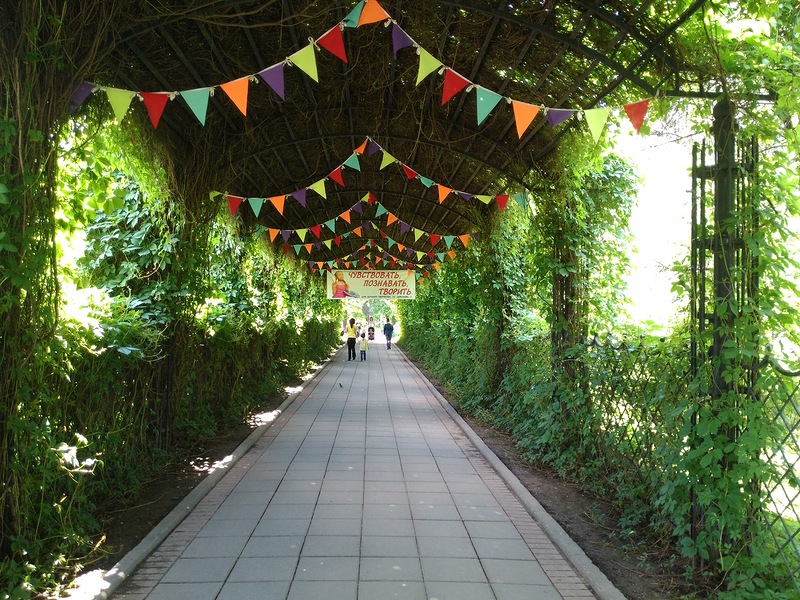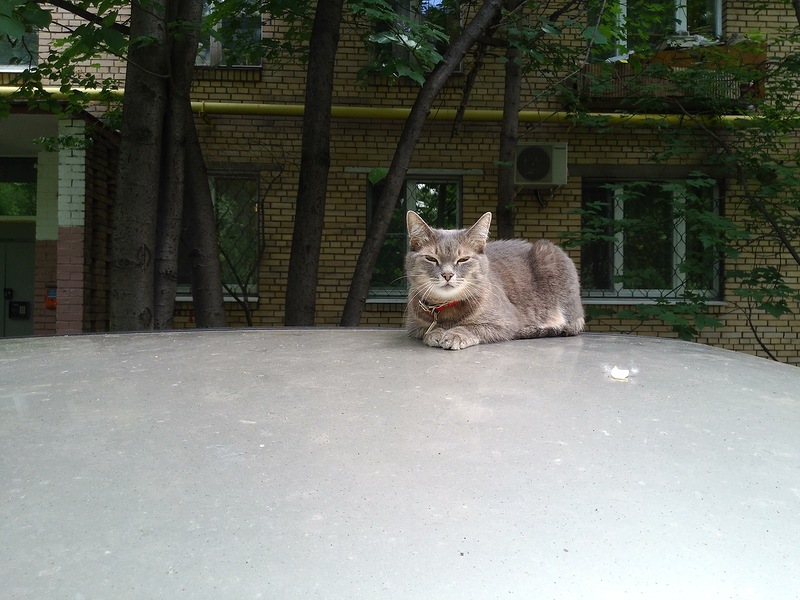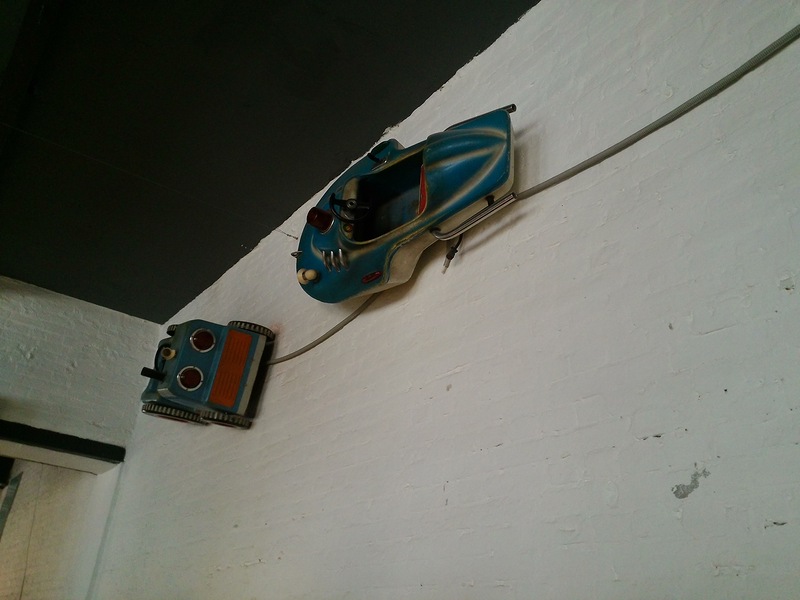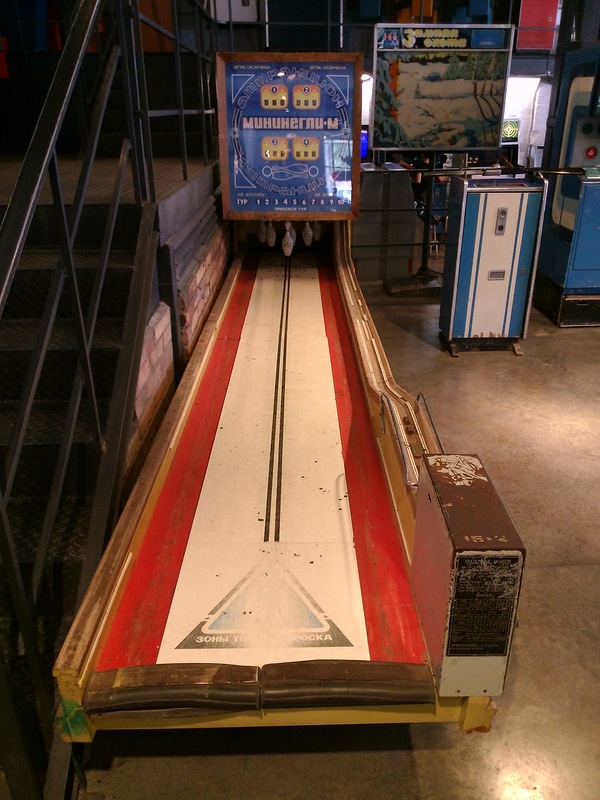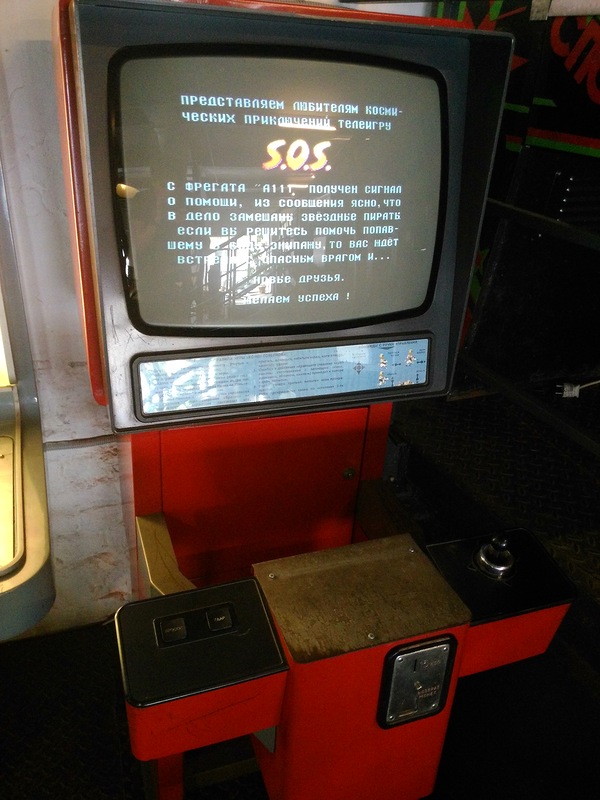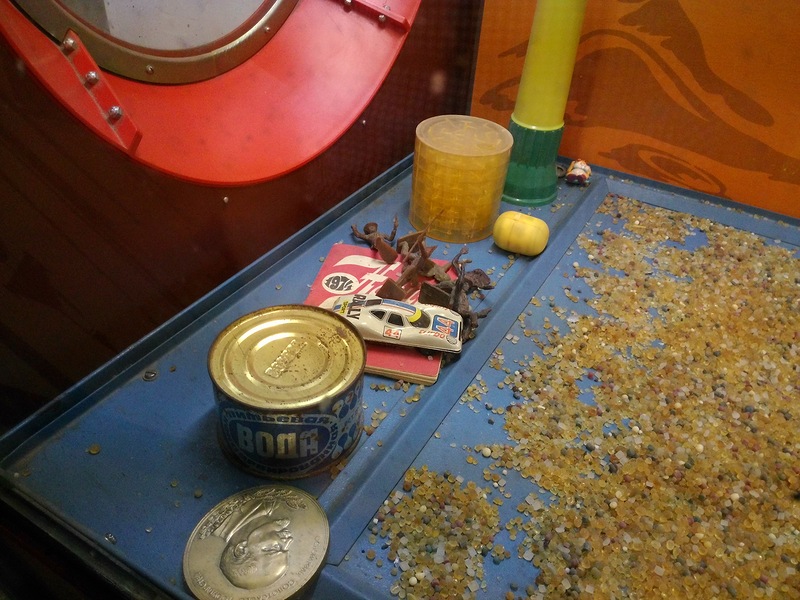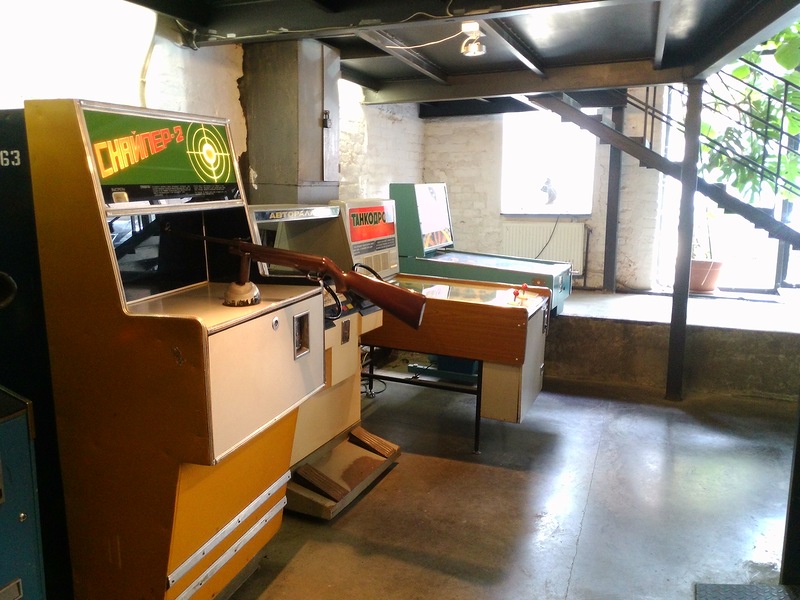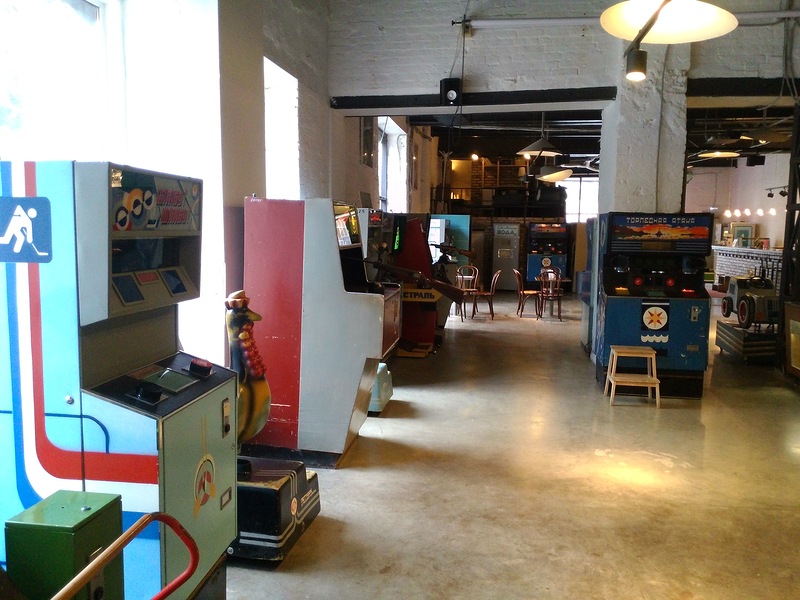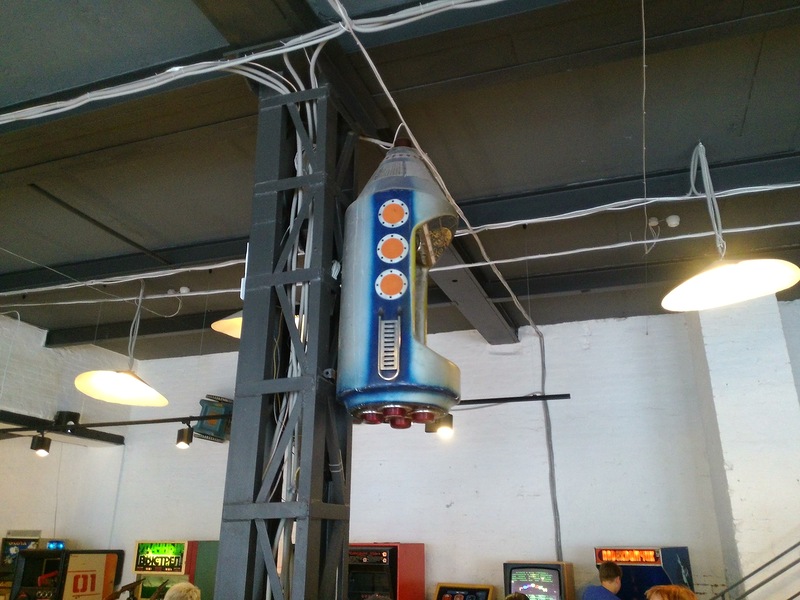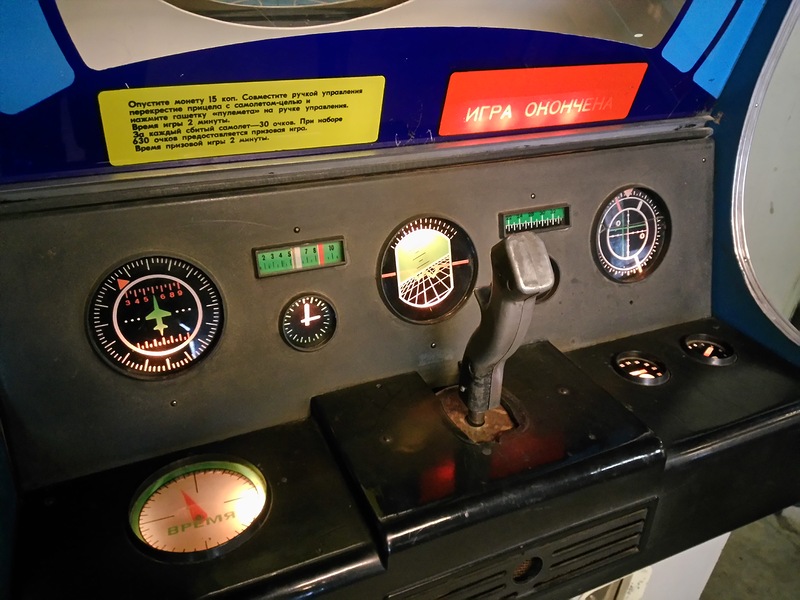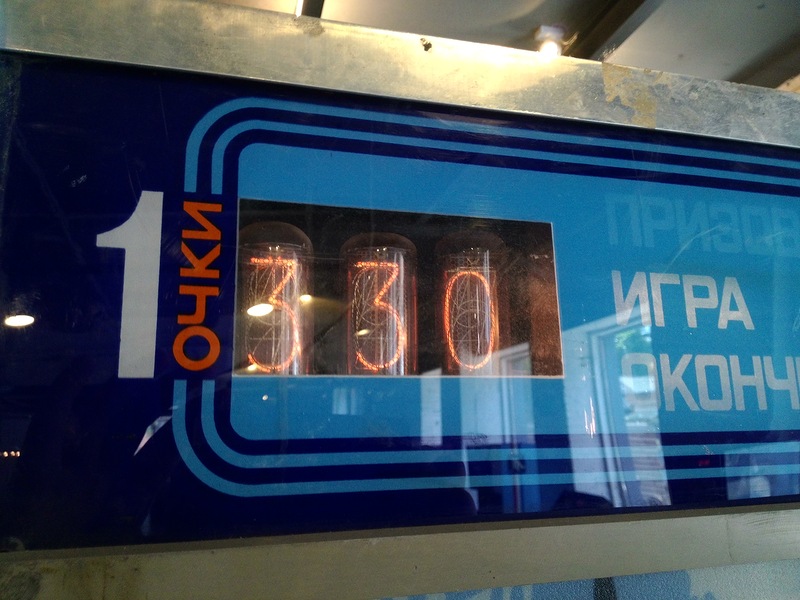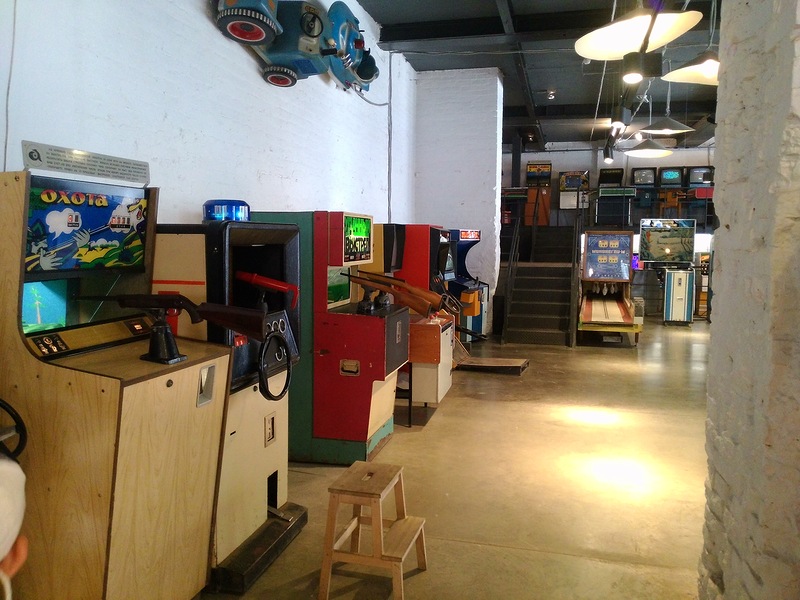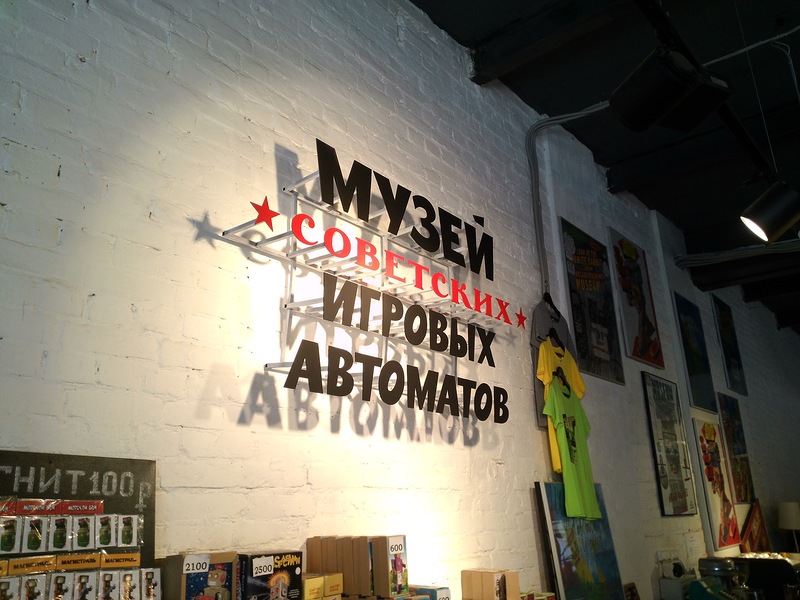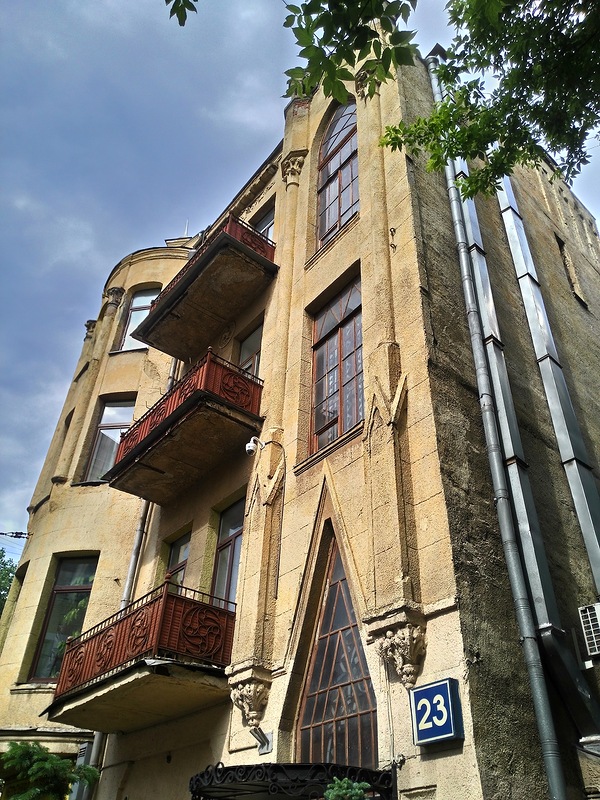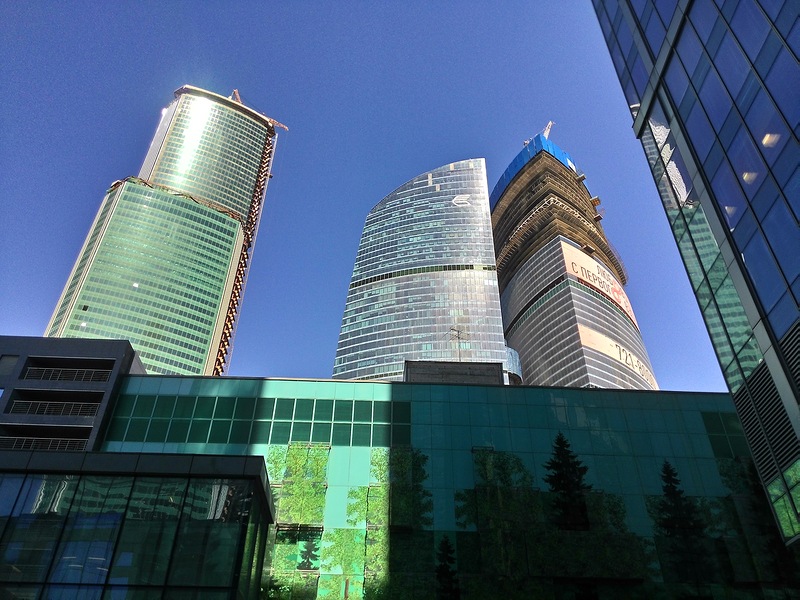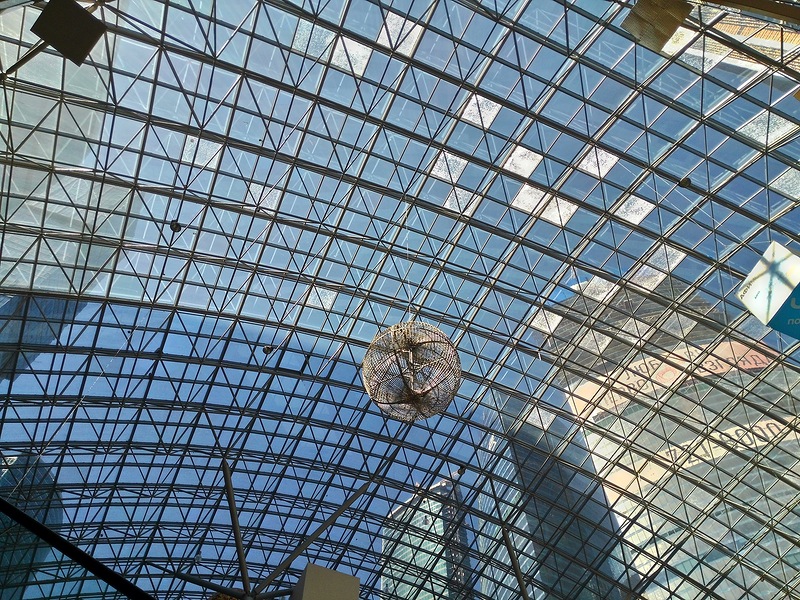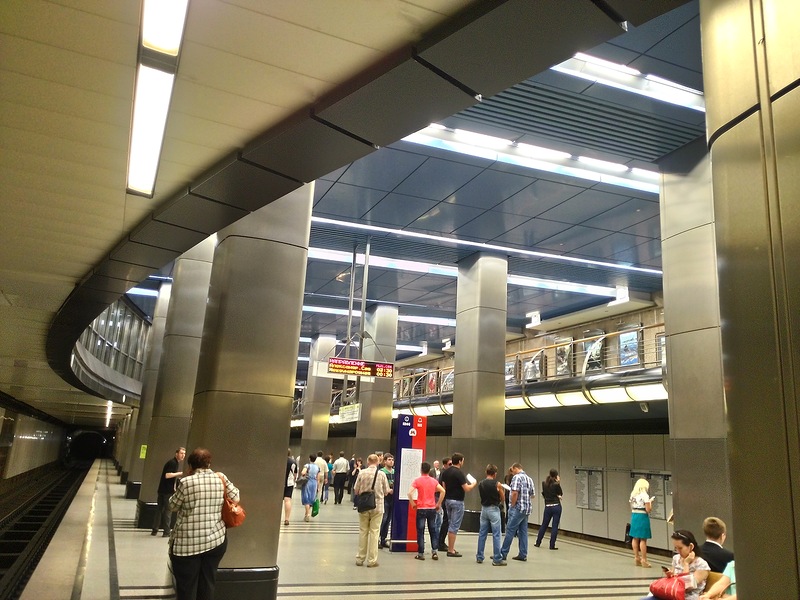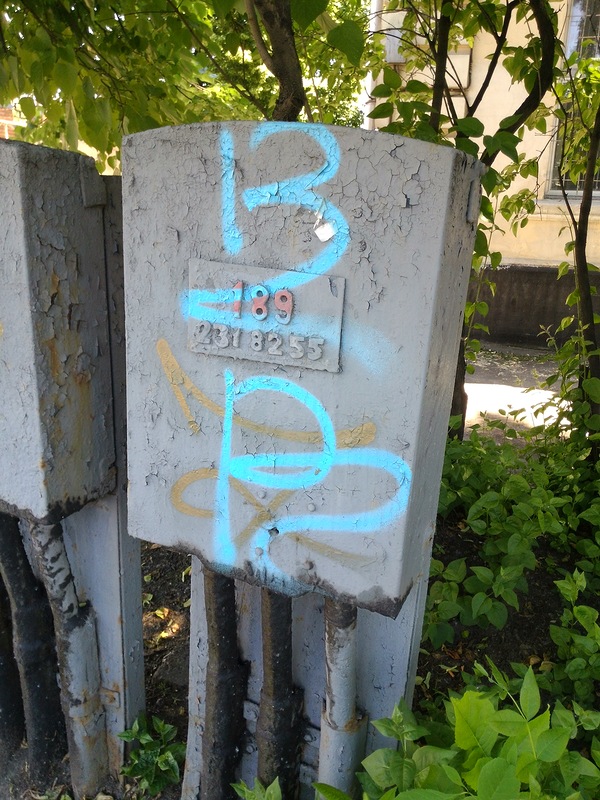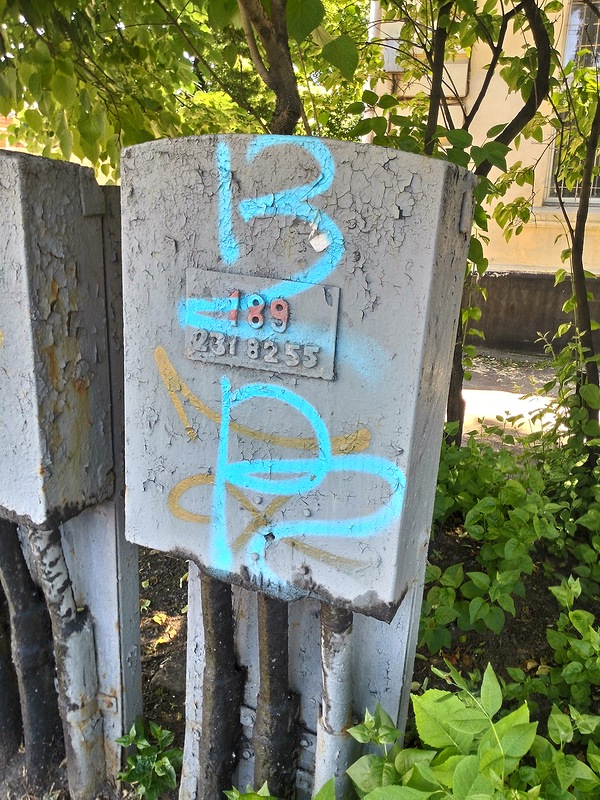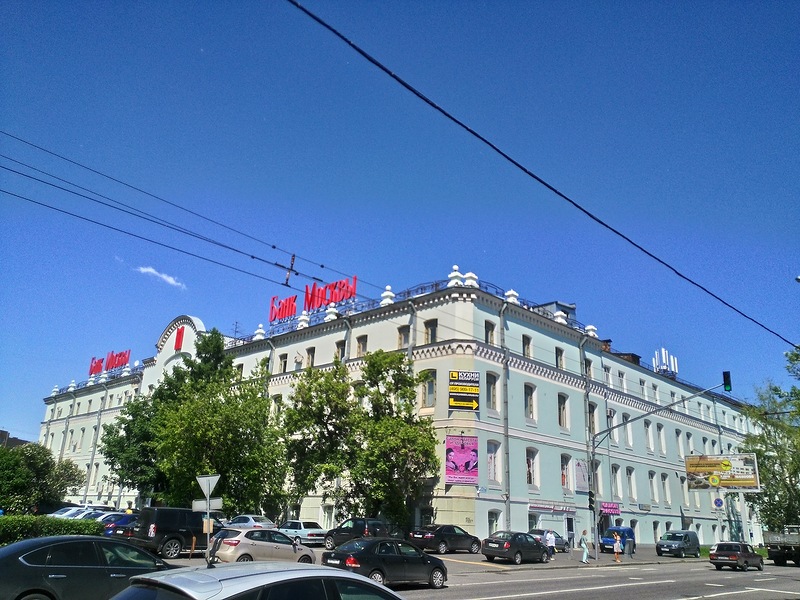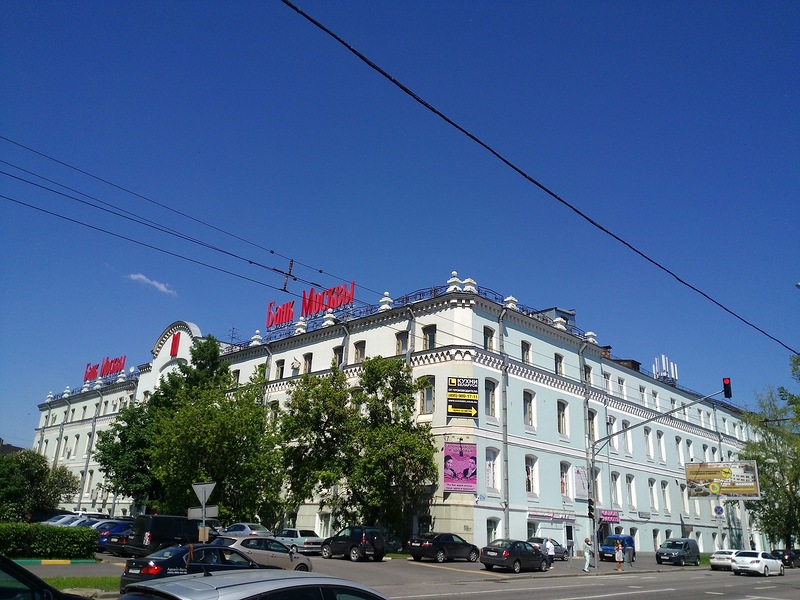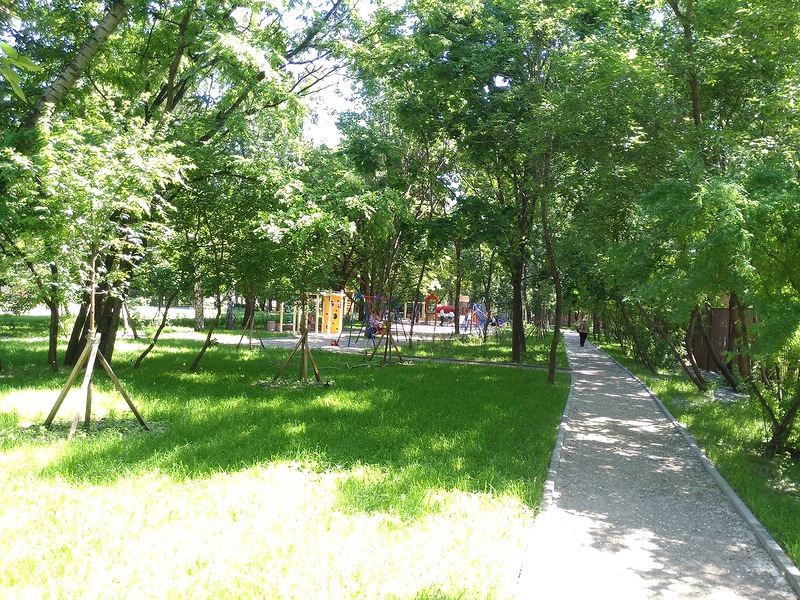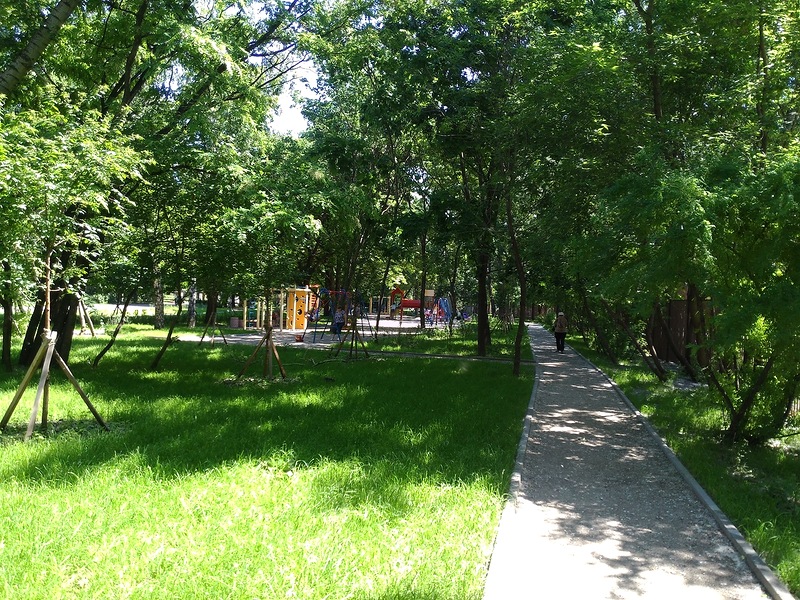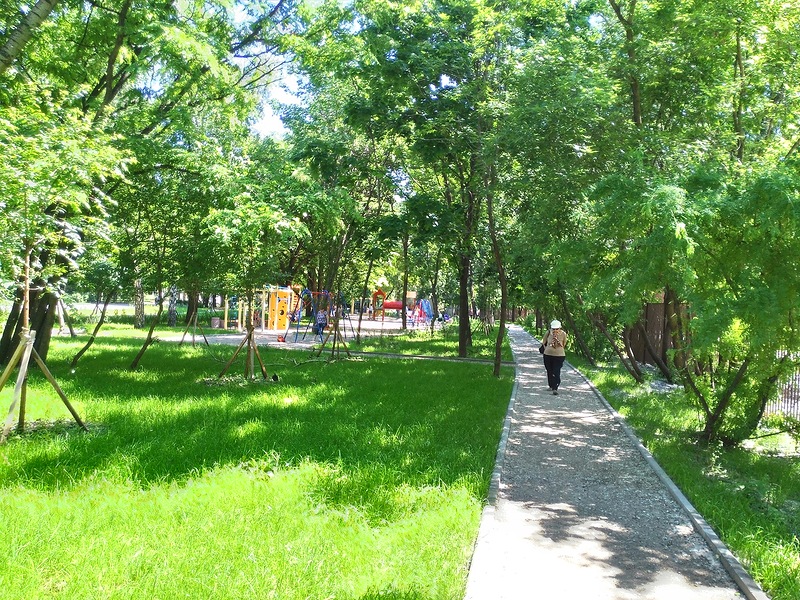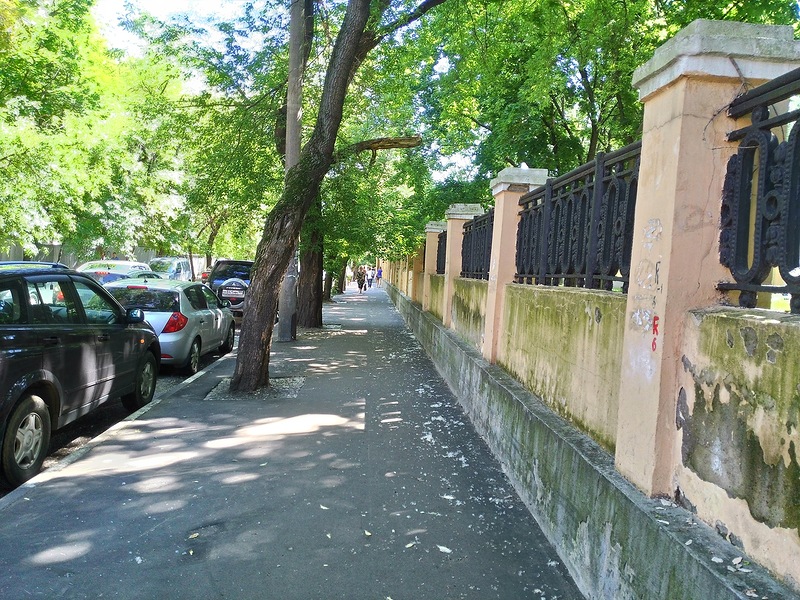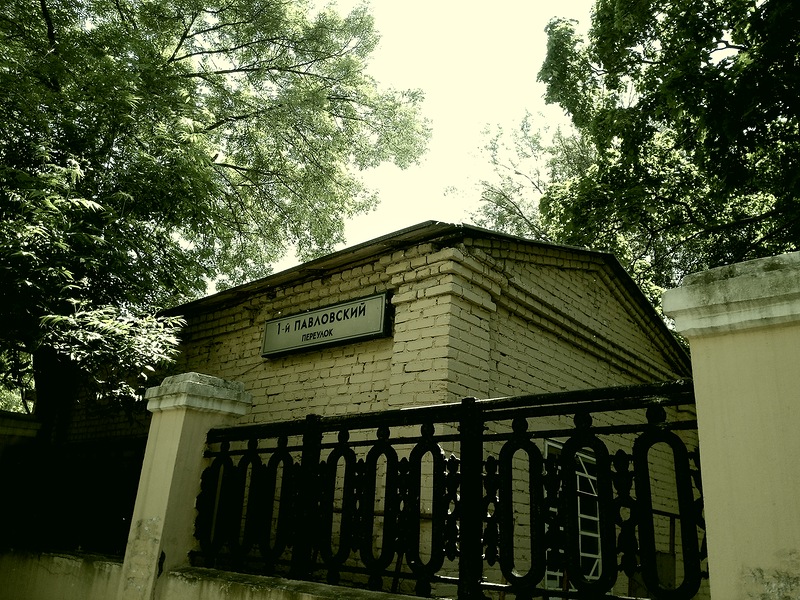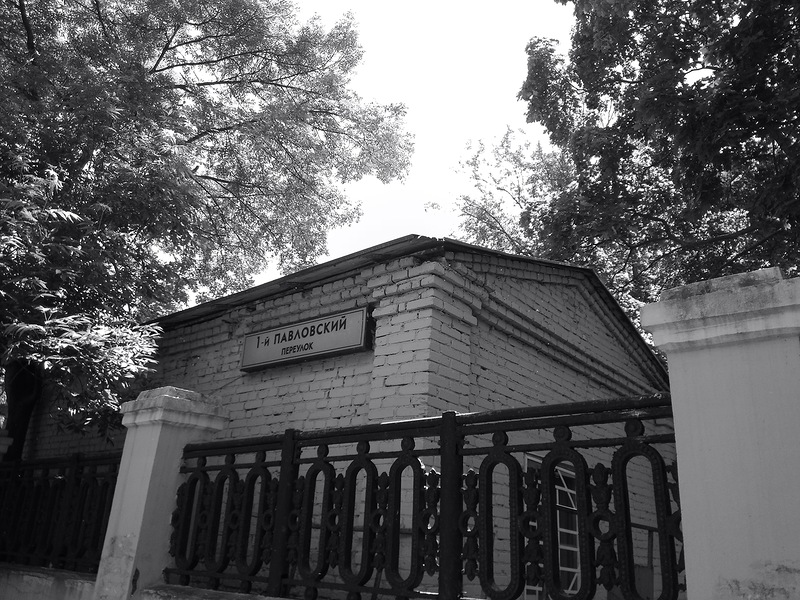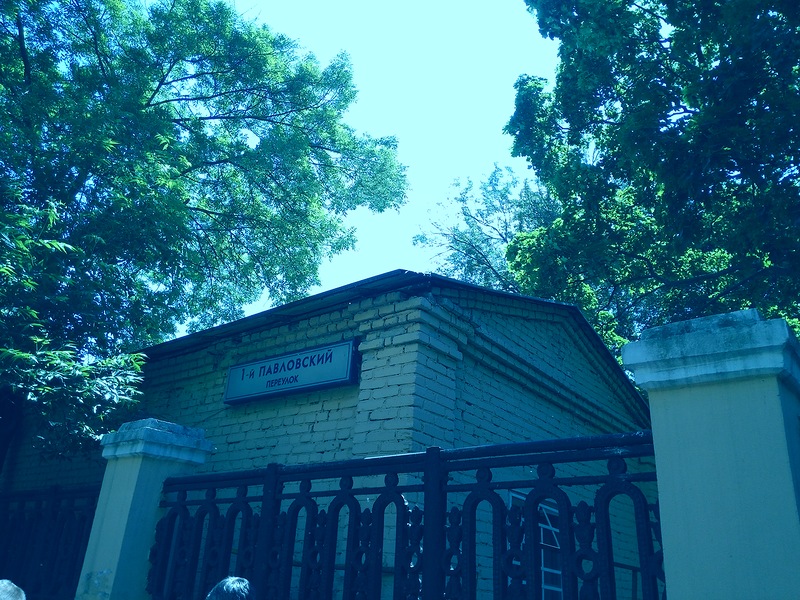ASUS Padfone Infinity Review
More recently, we were shown the first Padfone, and just six months later, Padfone 2 came out. Now, however, we have before us a completely updated Padfone Infinity with a 4-core processor and a Full HD screen. The concept of the device is simple: if you need a tablet, you can insert the phone into the docking station and use it as a tablet, while getting an extra battery.

Platform: Android 4.1 (JellyBean)
Color: Gray Titanium
Phone size: 143,5x72,8x8,9 mm
Tablet size: 264.6x181.6x10.6 mm
Phone weight: 145 g
Tablet weight: 532 g
Processor: Qualcomm® Snapdragon 600, 4 cores (1.7 GHz), video - Adreno 320 GPU
RAM: 2 GB LPDDR2 RAM
Data storage: 64 GB eMMc Flash, plus 50 GB in the ASUS Webstorage cloud for 2 years
Interfaces: WLAN 802.11a / b / g / n / ac, USB 2.0, Bluetooth V4.0, NFC, 3G WCDMA: 900/2100, 4G LTE: 800/1800/2100/2600, GPS AGPS & GLONASS
Phone screen: 5 ", Full HD 1920x1080, Super IPS + with Capacitive Multi touch panel
Tablet screen: 10.1 ", Full HD 1920x1200, Super IPS + with Capacitive Multi touch panel
Connectors: 3.5mm mini jack, Nano SIM, MyDP port (support for micro USB 2.0 Host & Device, 1080p video output)
Phone battery: 2400 mAh lithium polymer
Tablet Battery: 5000 mAh Lithium Polymer
Camera phone: front 2 megapixel, auto-focus, aperture F2. Primary: 13 megapixel LED Flash, F2 aperture, 5-element optics
Tablet camera: front 2 megapixel
Sound: MP3 / 3GP / AAC / AAC +
Sensors: G-Sensor / E-Compass / Gyroscope / Proximity / Light Sensor
Since the phone and the docking station can be sold in other countries separately, they are supplied in different boxes.

Boxing from the phone is quite compact.
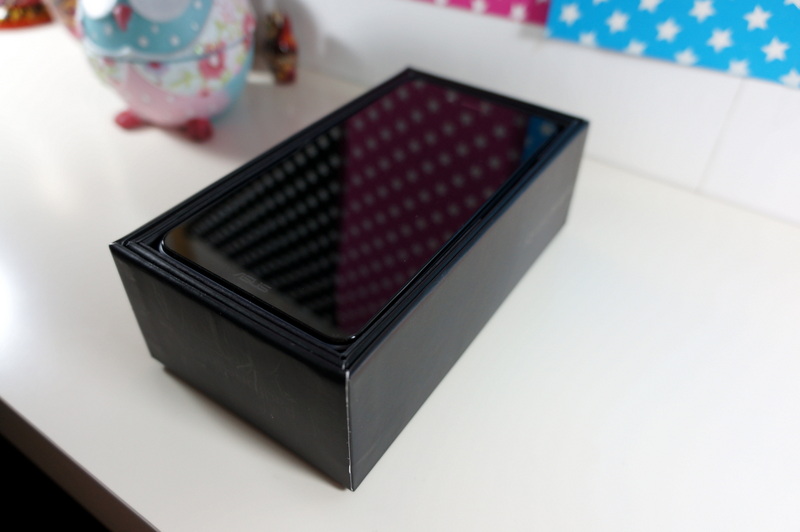
')
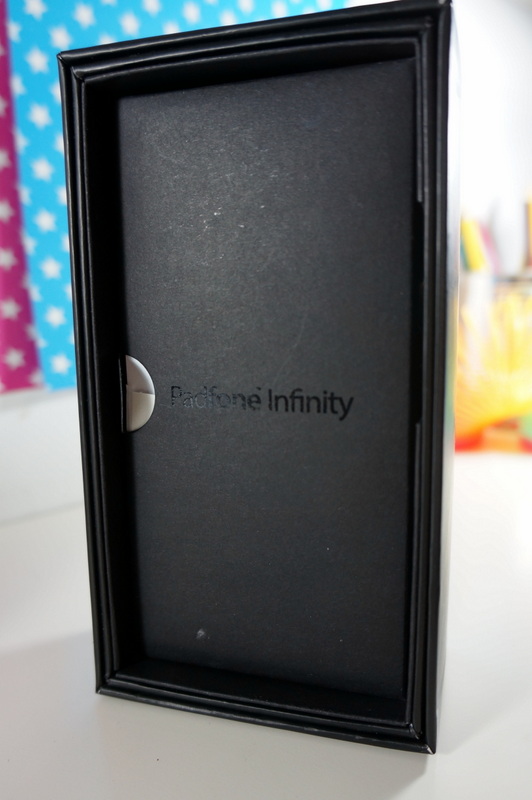
Inside is the phone itself, under it is an envelope with documentation, a small charger with USB output and a current of 2 A, a micro USB cable and a headset with headphones.
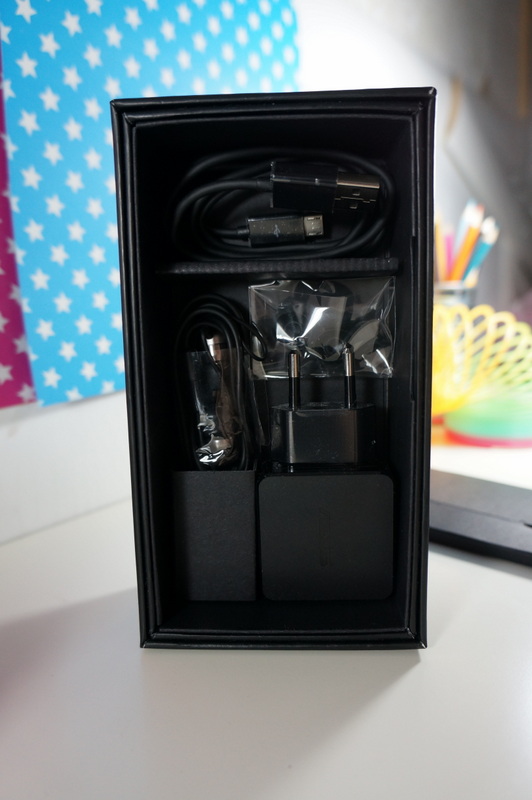
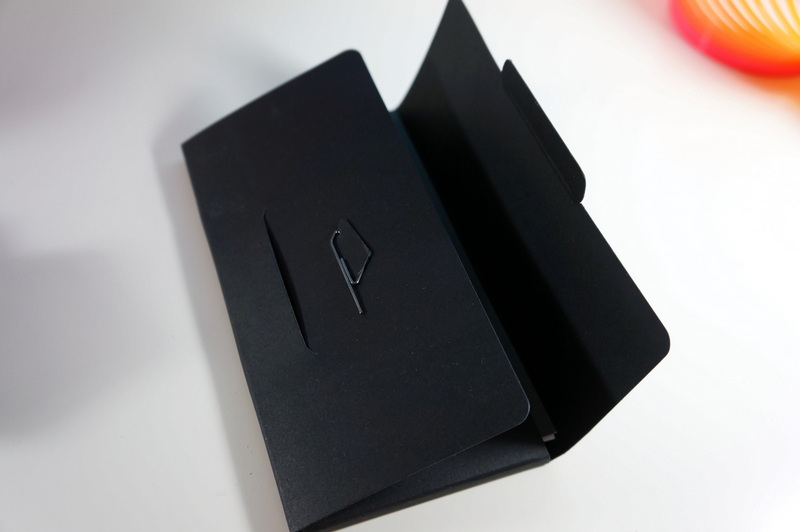

In the box with the docking station, in addition to the tablet, there is documentation.
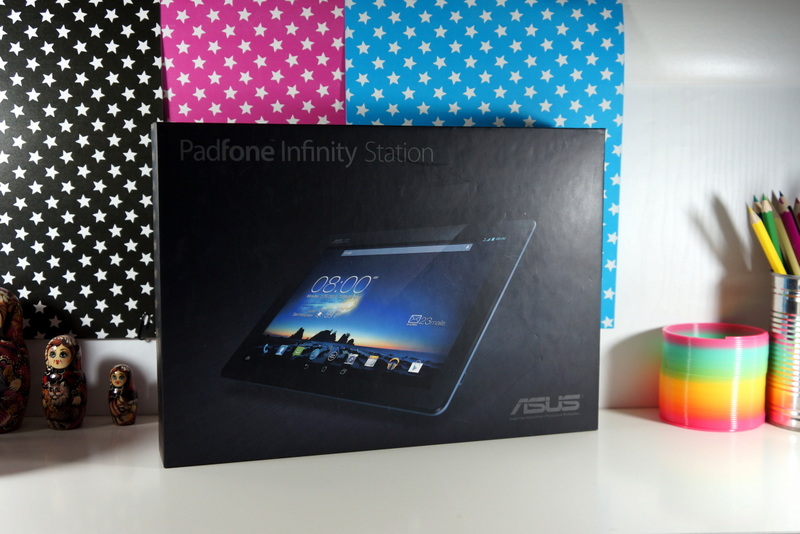
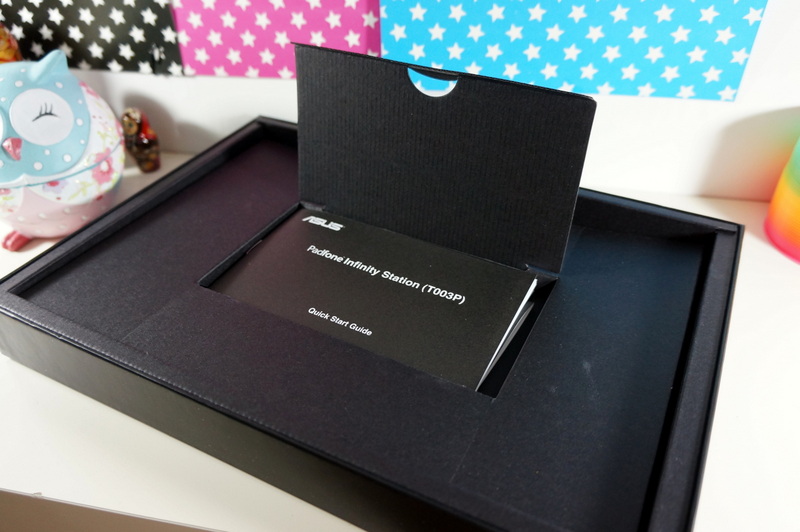
The phone is made of aluminum, the so-called unibody. The material is marked Aerospace-Grade Aluminum Alloy (the quality of the material complies with the standard of the aerospace industry). Aluminum is anodized twice, which provides stronger scratch protection.
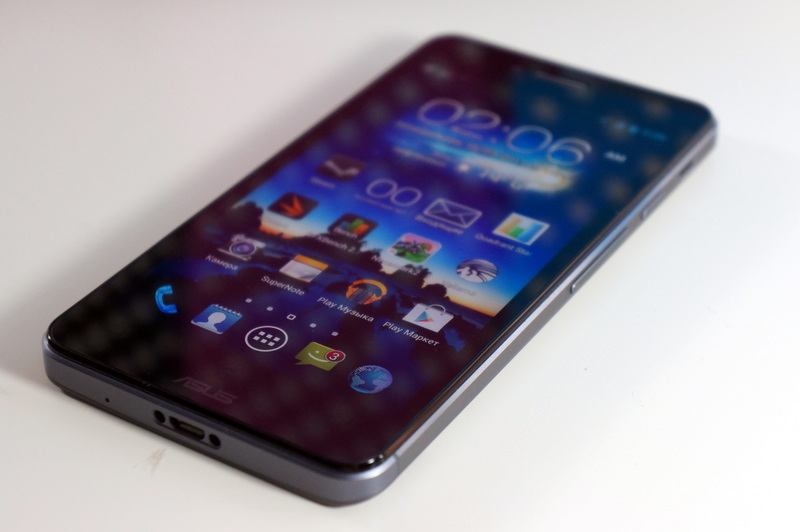
The front part is covered with glass. Below the screen are three touch buttons - back, the desktop and a list of running applications that have white backlighting when the screen is on.

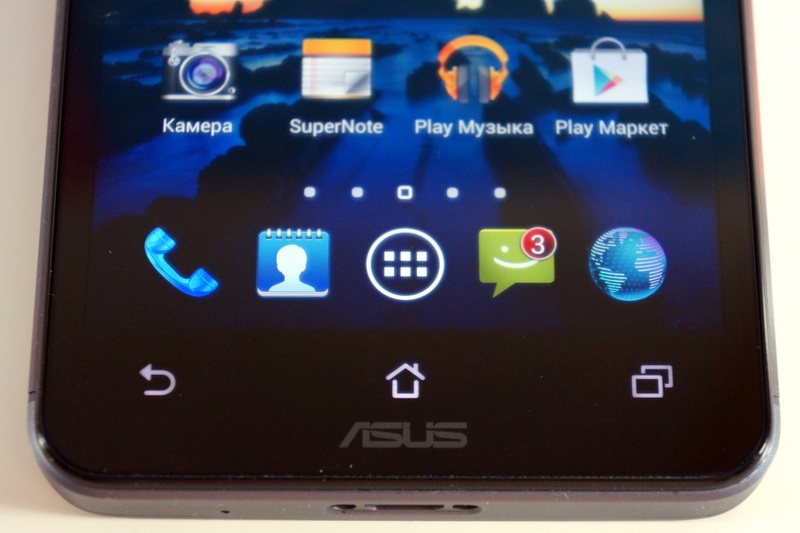
Above the screen are a camera for video calls and a voice speaker. The speaker slot is covered with a chrome metal insert.
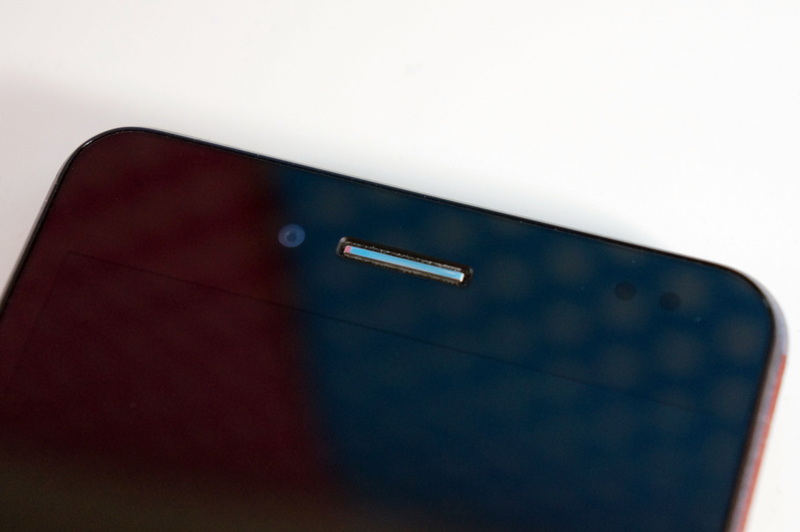
On the top of the smartphone - the usual 3.5-mm mini-jack for connecting a headset.

On the right side are the lock / on buttons and volume rocker. The movement of the buttons is tight, with a characteristic click, false positives do not occur. They are located quite well - the fingers fall just in the area of the buttons.

Nearby is the main speaker, covered with a metal grid. If you put the device in the front pocket, the call will be clearly audible - the speaker does not overlap.
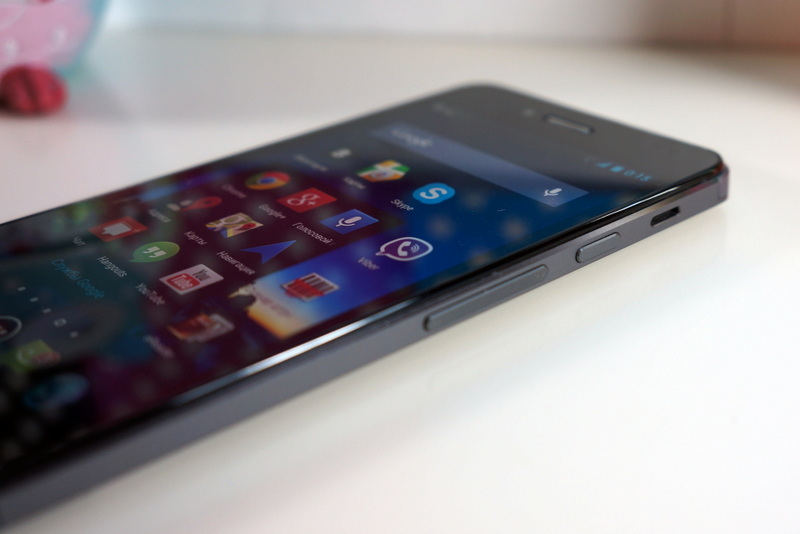
The micro USB connector and microphone are located on the bottom of the device. Next to the micro USB are two connectors for additional antennas (3G, LTE, Wi-Fi, BT), which are located in the docking station. Micro USB is a standard, third-party cable is mounted steadily. The output supports USB-OTG, respectively, you can connect a mouse, drives and other peripherals. To display images used Mobility DisplayPort ( MyDP ). Unlike MHL, it has a higher transfer rate (5.4 Gbps), allowing you to show Full HD video at 60 frames per second.

On the left side - a tray for Nano SIM. Included is a clip. It is not clear why manufacturers began to use this standard, the difference is still not so great.
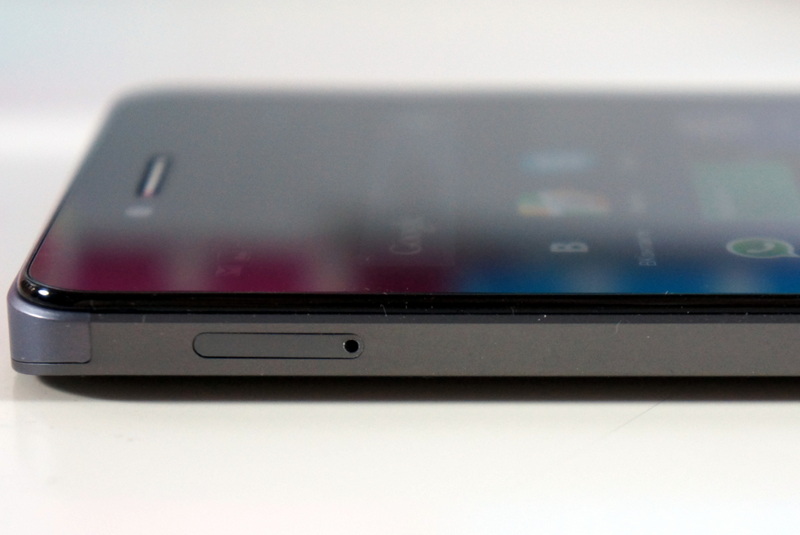
The back of the smartphone is covered with a polished aluminum plate, which, when touched, leaves no prints. The back and side ends constitute a single unit.

The upper and lower edges of the smartphone are made of polycarbonate and disguised as metal, so it’s difficult to determine the material at a glance.

The flash is located clearly in the middle, and a little to the side - a camera with chrome trim. Camera optics are slightly pressed into the case, so that the glass is protected from scratches when it comes into contact with surfaces (for example, if you place your smartphone on a table).
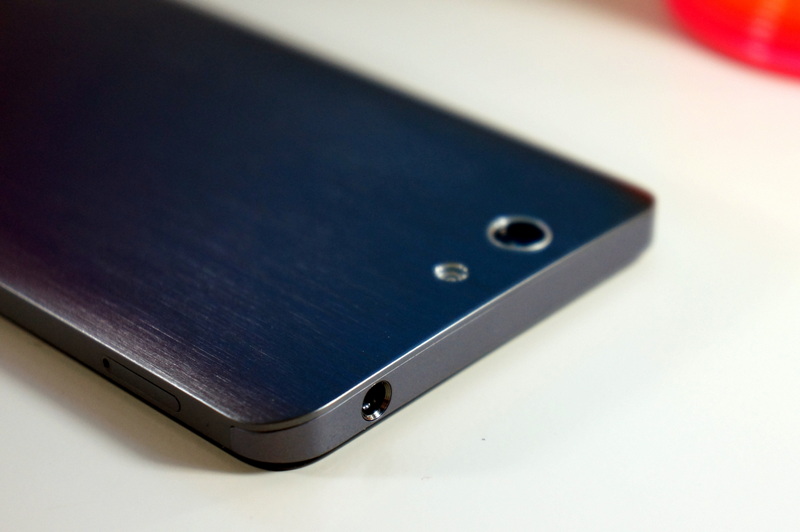
Under the nameplate Padfone hides NFC-antenna. The remaining antennas are hidden under the T-shaped plastic insert.

When you take the Infinty in hand, the first impression is a big smartphone, although I experienced the same when I first picked up the 4.7-inch Nexus 4. But you quickly get used to the smartphone - it fits well in your hand. The back of the tapered at the edges, the thickness of which is 6 mm, and in the middle - 8.9 mm.

The case itself is slightly wider than the glass covering the screen. Theoretically, in the fall, the entire impact will fall on the metal case, without hitting the glass.

In general, the design of the smartphone turned out to be successful - it has its zest among the flagships of 2013.
Updated Padfone Infinity got a great screen. Before us is the Full HD matrix from Sharp, using Super IPS + technology. The picture is very clear, the number of pixels per inch is 441. The screen is protected from scratches by Corning Glass with an oleophobic (grease repellent) coating. Fingerprints are easily removed, and the screen doesn’t stain so quickly. Looking at the reflections of bright light sources in the screen, noticeably the use of an anti-glare filter.

The screen has very good viewing angles. When viewed from different sides of the color is not inverted. To adjust the color there is a special utility ASUS Splendid, in which you can flexibly adjust the display of colors.

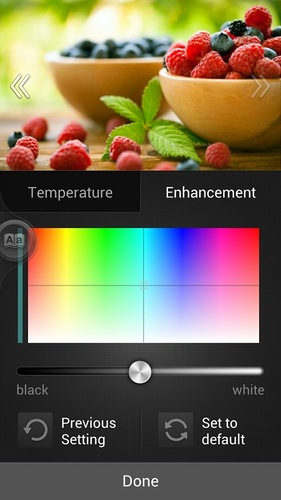
The maximum brightness of 400 nits is achieved when the special mode "Outside" is activated. With strong light, the screen brightness will automatically increase to maximum.

In the Padfone Infinity installed 13-megapixel sensor from Sony. It is made using BSI (BackSide Illuminated) backlight technology, which allows you to shoot with minimal noise in low light.
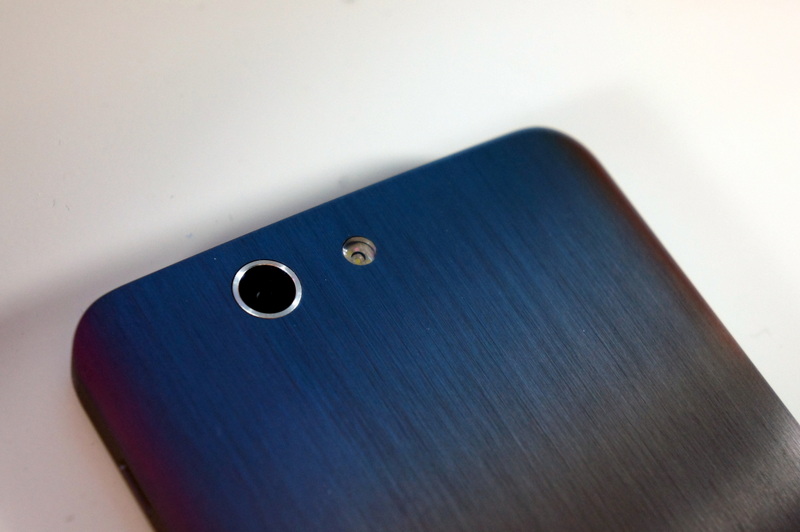
Optics consists of five lenses, f / 2.0 aperture. You can take pictures with the volume up key, but it is almost in the middle of the side face, which is not very convenient.
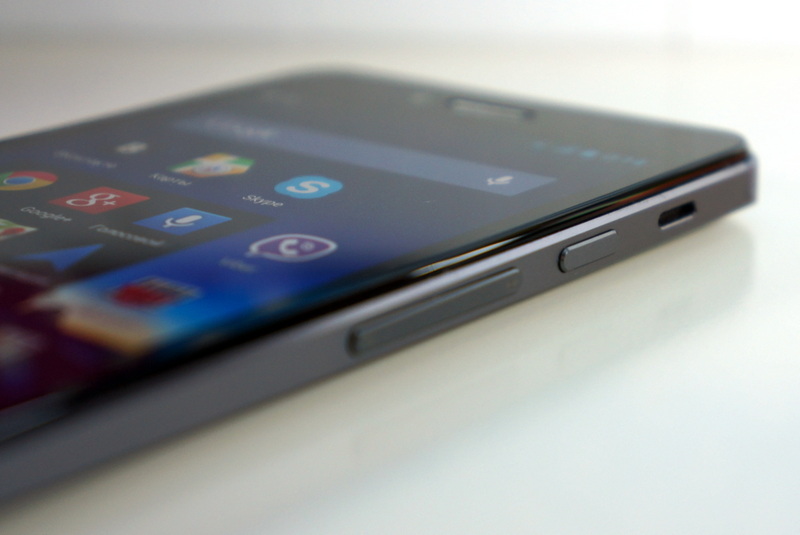
There are several camera modes: normal, GIF animation, panorama and HDR.

If you hold down the shooting button, you can take a series of up to 100 shots at a speed of eight photos per second. After that, a tape of photos opens, where you can mark good frames for saving. The camera interface is quite convenient: all the basic settings are made on separate buttons, which allows you to quickly select the desired shooting mode.
The video is shot in different modes: 1080p / 30FPS, 720p / 60FPS, 480p / 90FPS. There is also a slow motion mode without sound in 720p and 480p quality.
You can take pictures and videos by putting different effects on them: LOMO, vintage, sepia, negative, etc.
While shooting video there is an opportunity to take photos. Also present function "Stupid faces." When shooting video, a face is recognized, and various funny effects are applied: big eyes or nose, large or small mouth, etc.

In the camera settings, you can turn on voice control. The hint says that the picture will be taken after the words “smile” or “one, two, three”, but the phone so far understands only “Smile” or “One, two, three”.
For video calls above the screen is a 2 megapixel camera.
In general, the images are quite clear, thanks to a large sensor and 5-element optics.
In Russia, the smartphone will be sold with a docking station. Actually, its presence is the main feature of Padfone Infinity.
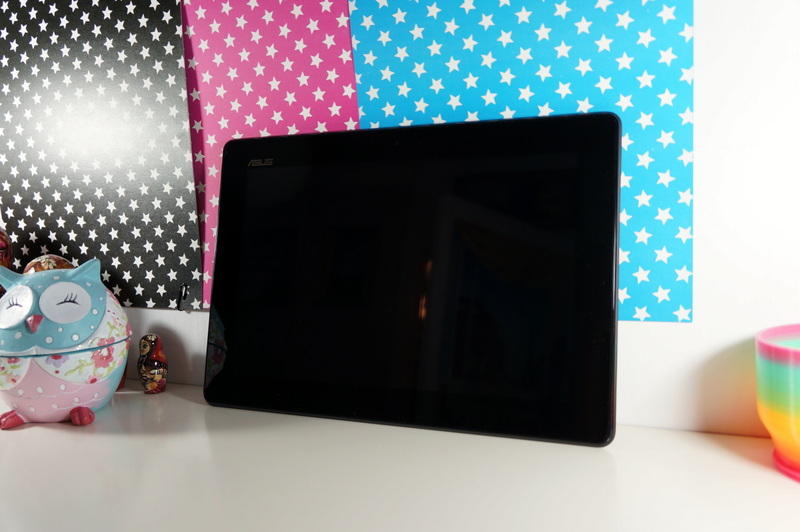
Externally, it is a regular tablet, but it does not have any hardware stuffing. Inside there is a battery, a camera for video calls, additional antennas (3G, LTE, Wi-Fi, BT) and control buttons. Without the smartphone itself, the tablet does not work.
The docking station does not look much different from the previous version of Padfone - the design is borrowed. The back of the device has a rubberized surface, keep it comfortable, does not slip. The surface is well protected from fingerprints.
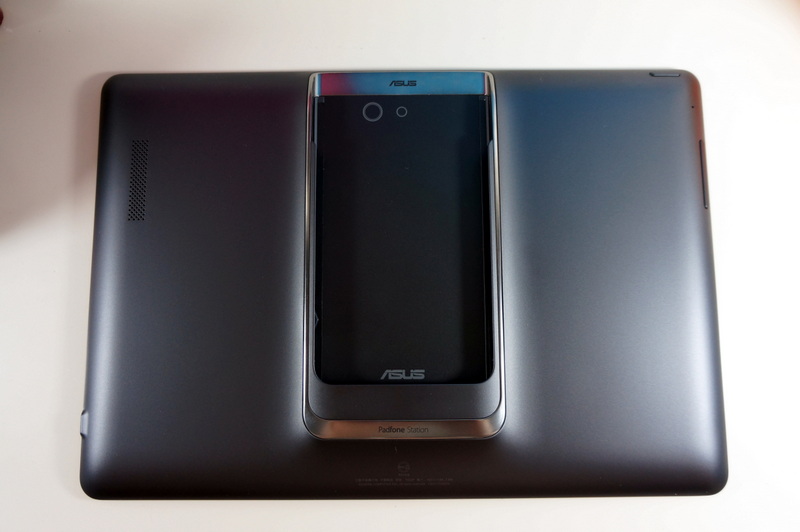
On the upper left side is a key lock, just below - the volume rocker, next to it - a microphone.

On the right side there is a micro USB, which, like a smartphone, supports USB-OTG and MyDP.
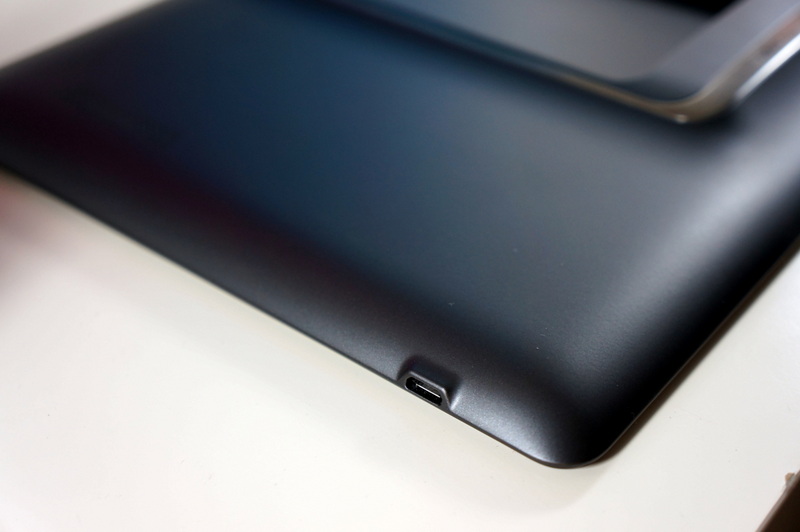
The location of the speaker is good, because it does not overlap hands. The sound quality from the docking station is not bad, but the volume is not felt - the feeling that the sound goes into the tablet case.
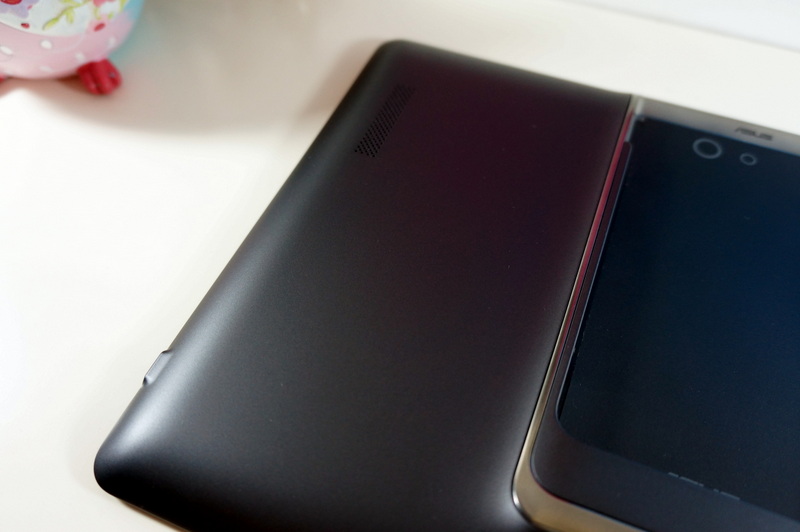
The phone is inserted into the docking station quite simply - no effort is required.

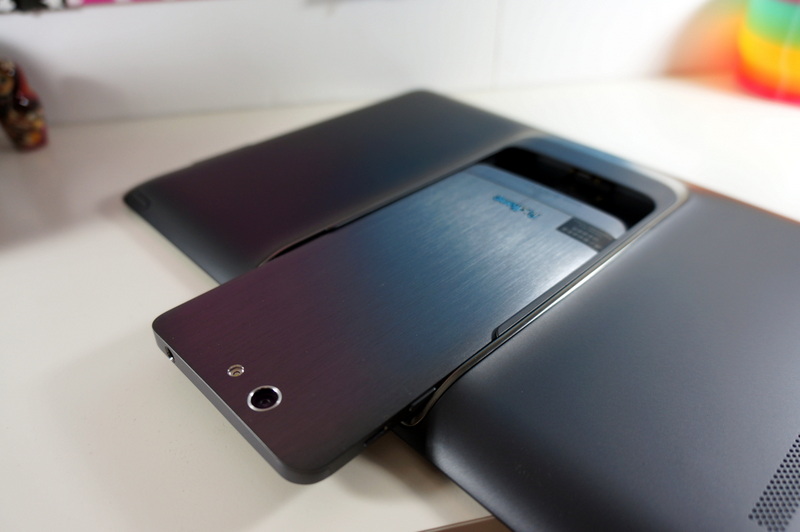
The smartphone slides along the guides and is firmly fixed in four rubber linings.
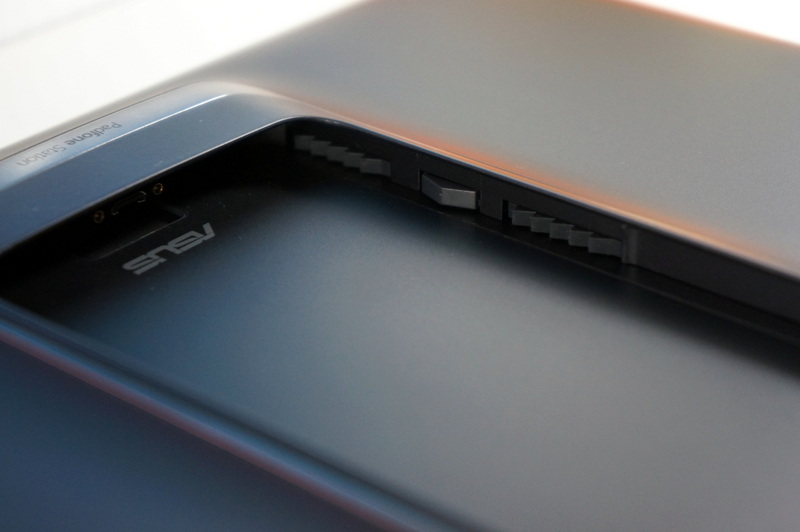
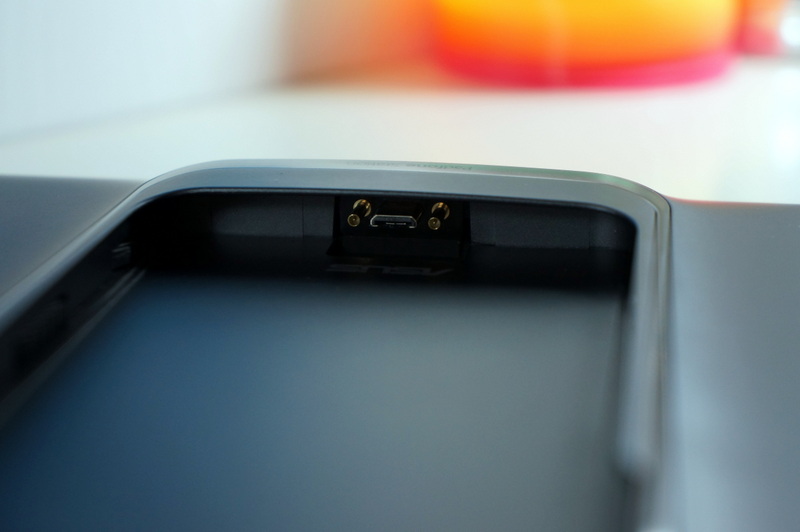
When successfully docked, the smartphone vibrates and turns on the tablet screen. The phone keeps quite tightly - even if you turn the tablet over and shake it, nothing happens.
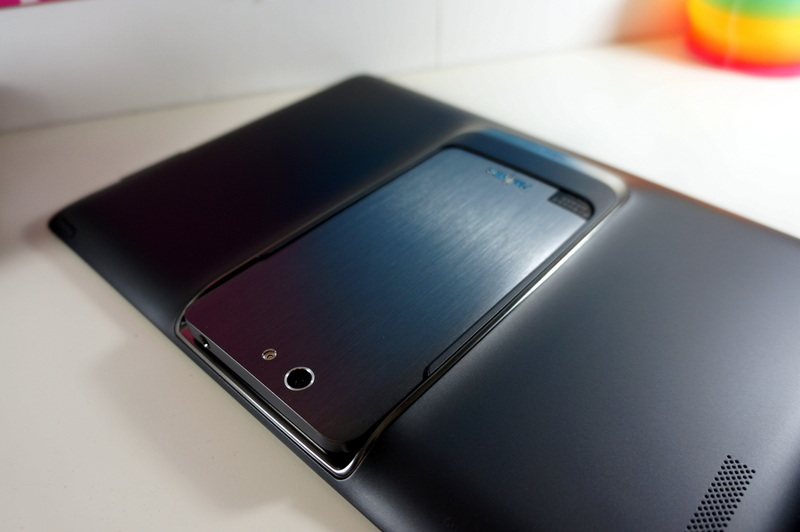
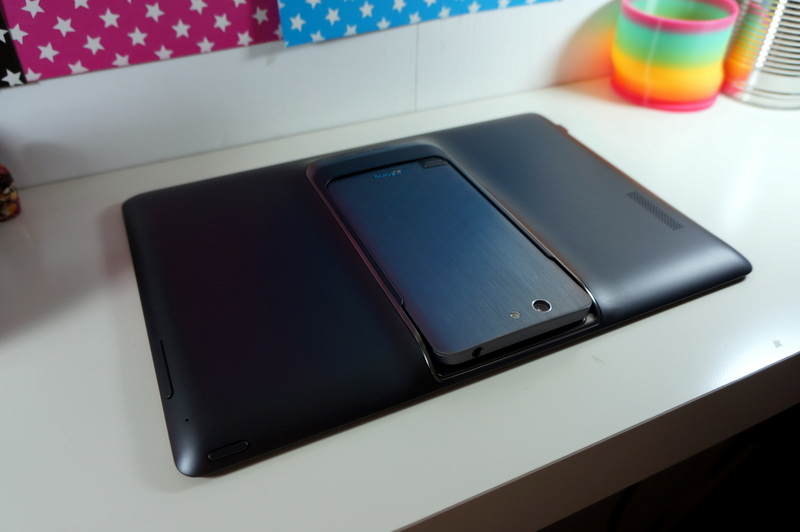


Having inserted the smartphone into the docking station, the screen turns on, and we have a desktop in front of us. You can individually configure the tables of the phone and tablet.
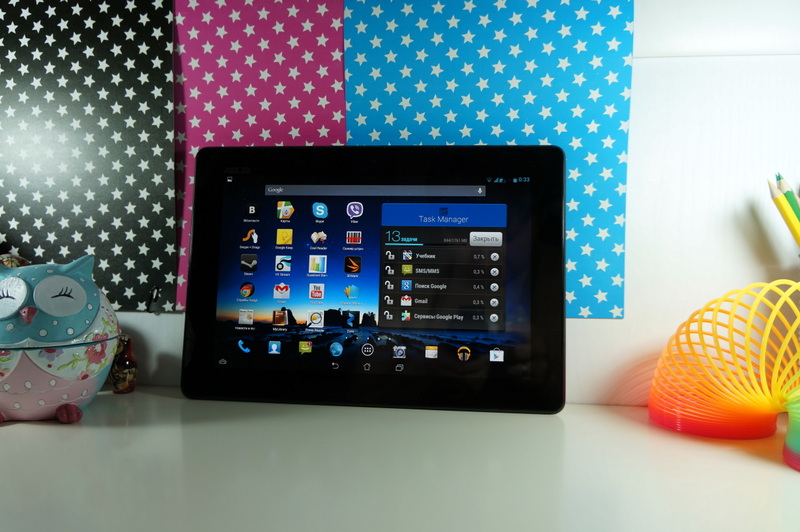
Most system applications successfully transfer the transition to the tablet view and back. For example, if contacts are running, then when we insert the smartphone into the docking station, contacts also open on the tablet screen. But this is not possible with all applications: for example, Gmail needs to be re-opened. The same situation with the games - most do not know how to switch on the go, they need to restart.
The screen of the docking station has a resolution of 1920x1200 pixels, using the Super IPS + matrix from Panasonic. The number of pixels per inch (PPI) is 224.

Viewing angles are high, but with strong deviations you can notice a change in colors. The maximum brightness in the "Outside" mode is 400 nits. The screen is protected from scratches and has an oleophobic coating, fingerprints are easily removed.
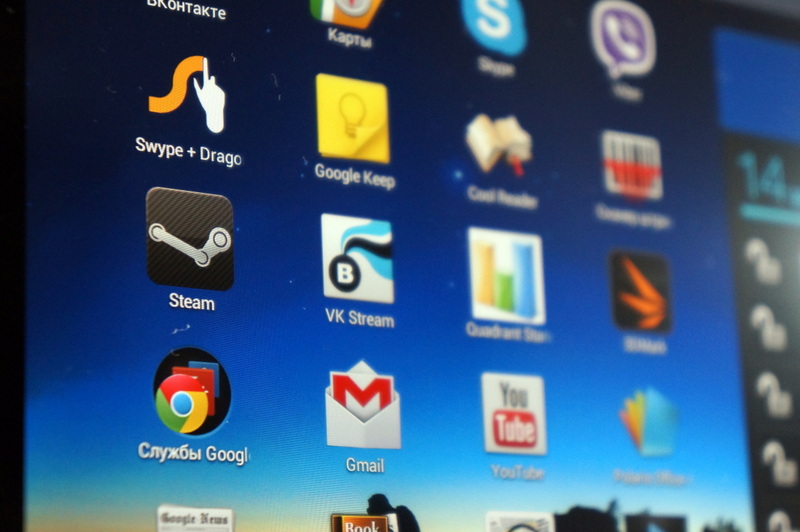
Here, too, there is an anti-glare filter, but the screen of the phone copes better with glare. In general, in terms of colors and picture quality, the screen of the tablet loses slightly to the phone.
Capacity of the built-in lithium-polymer battery 2400 mAh, non-removable battery. ASUS has built in several software modes of the smartphone, allowing you to save battery power by disabling push messages in a couple of clicks.
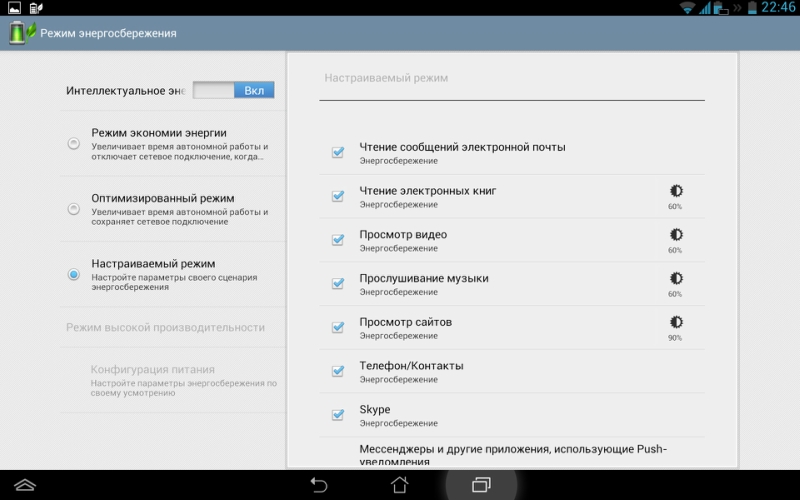


Thus, the smartphone can work from the battery about two days. If you turn off the economy mode, the smartphone with active use will last until the evening. Playing a high-performance game, the smartphone battery can be discharged in three hours. Quite well, considering that there is a Full HD screen.
The docking station has its own lithium-polymer battery with a capacity of 5000 mAh. The tablet cannot be powered by the smartphone battery, that is, if the battery in the docking station is low, the tablet screen will not work. ASUS offers three power modes for the docking station:
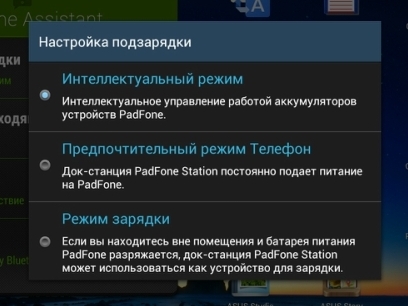
Full charging of the smartphone takes 2.5 hours, charging the docking station - almost 4 hours. The tablet can be charged from micro USB without a smartphone.

The hardware platform of the smartphone works on the top-end solution from Qualcomm, the Snapdragon 600 chip is used. Inside, the four Krait 300 cores work at 1.7 GHz in conjunction with the Adreno 320 graphics.
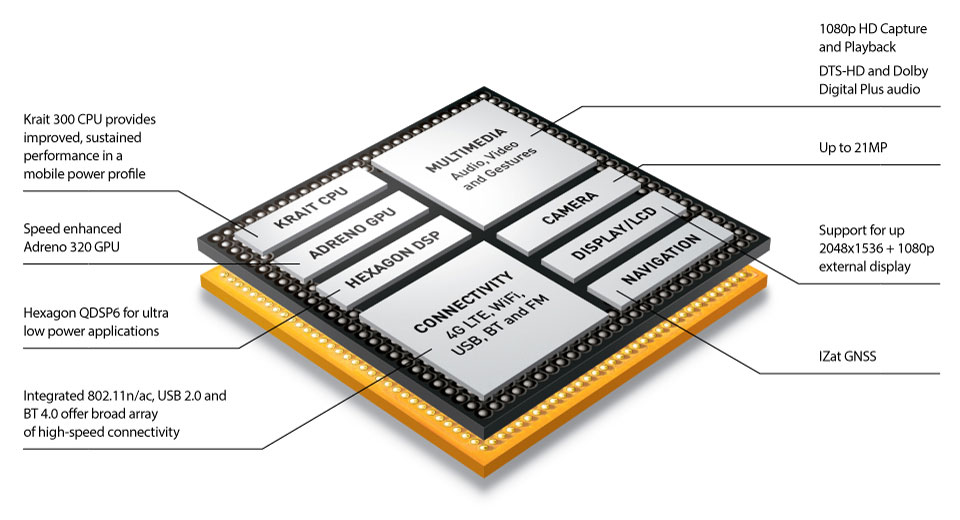
RAM - 2 GB, uses energy-efficient and fast memory LP-DDR3 . There is LTE support with our operators.
At the moment, the smartphone works on Android 4.1.2. The software is similar to the other tablets on Android from ASUS, various programs are installed that allow you to start working with a smartphone right out of the box.
The dictionary turned out the most interesting application. Almost in all programs, the movable dictionary button is visible on the side, and when pressed, the text selection mode is activated. You can translate any word in a third-party application, whether it is a browser, mail or book.
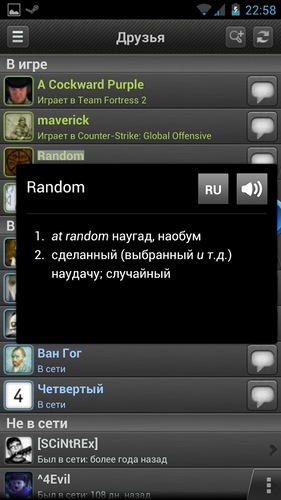
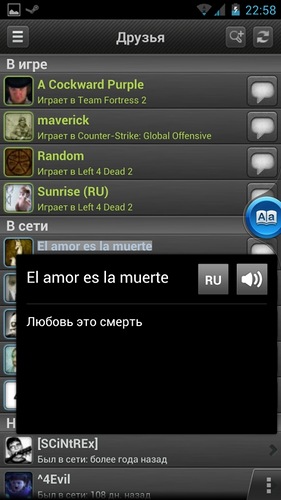
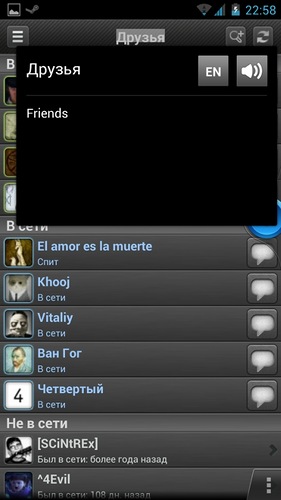
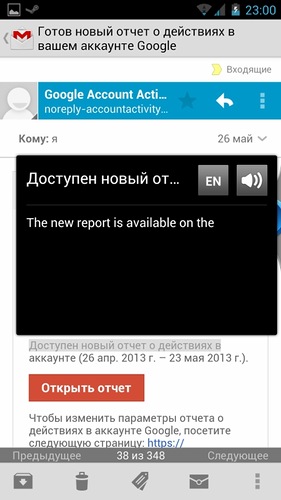
The third edition of Padfone came out on time. The hardware of the smartphone works on an equal footing with the flagships of 2013. You also get a powerful tablet with a Full HD screen, which is also a high level among competitors. Padfone Infinity is the only device that has no analogues, it will definitely find its buyer.
In Russia, the sale will go complete with a docking station, the volume is 64 GB, only one color variant is titanium gray. Price - 34 990 rubles.

Specs
Platform: Android 4.1 (JellyBean)
Color: Gray Titanium
Phone size: 143,5x72,8x8,9 mm
Tablet size: 264.6x181.6x10.6 mm
Phone weight: 145 g
Tablet weight: 532 g
Processor: Qualcomm® Snapdragon 600, 4 cores (1.7 GHz), video - Adreno 320 GPU
RAM: 2 GB LPDDR2 RAM
Data storage: 64 GB eMMc Flash, plus 50 GB in the ASUS Webstorage cloud for 2 years
Interfaces: WLAN 802.11a / b / g / n / ac, USB 2.0, Bluetooth V4.0, NFC, 3G WCDMA: 900/2100, 4G LTE: 800/1800/2100/2600, GPS AGPS & GLONASS
Phone screen: 5 ", Full HD 1920x1080, Super IPS + with Capacitive Multi touch panel
Tablet screen: 10.1 ", Full HD 1920x1200, Super IPS + with Capacitive Multi touch panel
Connectors: 3.5mm mini jack, Nano SIM, MyDP port (support for micro USB 2.0 Host & Device, 1080p video output)
Phone battery: 2400 mAh lithium polymer
Tablet Battery: 5000 mAh Lithium Polymer
Camera phone: front 2 megapixel, auto-focus, aperture F2. Primary: 13 megapixel LED Flash, F2 aperture, 5-element optics
Tablet camera: front 2 megapixel
Sound: MP3 / 3GP / AAC / AAC +
Sensors: G-Sensor / E-Compass / Gyroscope / Proximity / Light Sensor
Equipment
Since the phone and the docking station can be sold in other countries separately, they are supplied in different boxes.

Boxing from the phone is quite compact.

')

Inside is the phone itself, under it is an envelope with documentation, a small charger with USB output and a current of 2 A, a micro USB cable and a headset with headphones.



In the box with the docking station, in addition to the tablet, there is documentation.


Appearance of the smartphone
The phone is made of aluminum, the so-called unibody. The material is marked Aerospace-Grade Aluminum Alloy (the quality of the material complies with the standard of the aerospace industry). Aluminum is anodized twice, which provides stronger scratch protection.

The front part is covered with glass. Below the screen are three touch buttons - back, the desktop and a list of running applications that have white backlighting when the screen is on.


Above the screen are a camera for video calls and a voice speaker. The speaker slot is covered with a chrome metal insert.

On the top of the smartphone - the usual 3.5-mm mini-jack for connecting a headset.

On the right side are the lock / on buttons and volume rocker. The movement of the buttons is tight, with a characteristic click, false positives do not occur. They are located quite well - the fingers fall just in the area of the buttons.

Nearby is the main speaker, covered with a metal grid. If you put the device in the front pocket, the call will be clearly audible - the speaker does not overlap.

The micro USB connector and microphone are located on the bottom of the device. Next to the micro USB are two connectors for additional antennas (3G, LTE, Wi-Fi, BT), which are located in the docking station. Micro USB is a standard, third-party cable is mounted steadily. The output supports USB-OTG, respectively, you can connect a mouse, drives and other peripherals. To display images used Mobility DisplayPort ( MyDP ). Unlike MHL, it has a higher transfer rate (5.4 Gbps), allowing you to show Full HD video at 60 frames per second.

On the left side - a tray for Nano SIM. Included is a clip. It is not clear why manufacturers began to use this standard, the difference is still not so great.

The back of the smartphone is covered with a polished aluminum plate, which, when touched, leaves no prints. The back and side ends constitute a single unit.

The upper and lower edges of the smartphone are made of polycarbonate and disguised as metal, so it’s difficult to determine the material at a glance.

The flash is located clearly in the middle, and a little to the side - a camera with chrome trim. Camera optics are slightly pressed into the case, so that the glass is protected from scratches when it comes into contact with surfaces (for example, if you place your smartphone on a table).

Under the nameplate Padfone hides NFC-antenna. The remaining antennas are hidden under the T-shaped plastic insert.

When you take the Infinty in hand, the first impression is a big smartphone, although I experienced the same when I first picked up the 4.7-inch Nexus 4. But you quickly get used to the smartphone - it fits well in your hand. The back of the tapered at the edges, the thickness of which is 6 mm, and in the middle - 8.9 mm.

The case itself is slightly wider than the glass covering the screen. Theoretically, in the fall, the entire impact will fall on the metal case, without hitting the glass.

In general, the design of the smartphone turned out to be successful - it has its zest among the flagships of 2013.
Screen
Updated Padfone Infinity got a great screen. Before us is the Full HD matrix from Sharp, using Super IPS + technology. The picture is very clear, the number of pixels per inch is 441. The screen is protected from scratches by Corning Glass with an oleophobic (grease repellent) coating. Fingerprints are easily removed, and the screen doesn’t stain so quickly. Looking at the reflections of bright light sources in the screen, noticeably the use of an anti-glare filter.

The screen has very good viewing angles. When viewed from different sides of the color is not inverted. To adjust the color there is a special utility ASUS Splendid, in which you can flexibly adjust the display of colors.


The maximum brightness of 400 nits is achieved when the special mode "Outside" is activated. With strong light, the screen brightness will automatically increase to maximum.

Camera
In the Padfone Infinity installed 13-megapixel sensor from Sony. It is made using BSI (BackSide Illuminated) backlight technology, which allows you to shoot with minimal noise in low light.

Optics consists of five lenses, f / 2.0 aperture. You can take pictures with the volume up key, but it is almost in the middle of the side face, which is not very convenient.

There are several camera modes: normal, GIF animation, panorama and HDR.

If you hold down the shooting button, you can take a series of up to 100 shots at a speed of eight photos per second. After that, a tape of photos opens, where you can mark good frames for saving. The camera interface is quite convenient: all the basic settings are made on separate buttons, which allows you to quickly select the desired shooting mode.
The video is shot in different modes: 1080p / 30FPS, 720p / 60FPS, 480p / 90FPS. There is also a slow motion mode without sound in 720p and 480p quality.
You can take pictures and videos by putting different effects on them: LOMO, vintage, sepia, negative, etc.
While shooting video there is an opportunity to take photos. Also present function "Stupid faces." When shooting video, a face is recognized, and various funny effects are applied: big eyes or nose, large or small mouth, etc.

In the camera settings, you can turn on voice control. The hint says that the picture will be taken after the words “smile” or “one, two, three”, but the phone so far understands only “Smile” or “One, two, three”.
For video calls above the screen is a 2 megapixel camera.
View camera interface screenshots
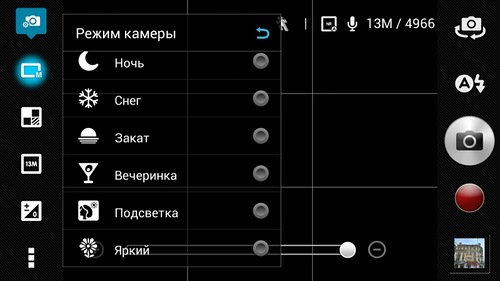
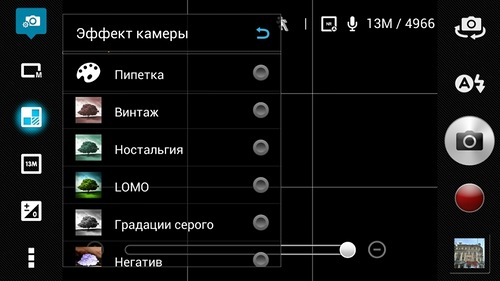

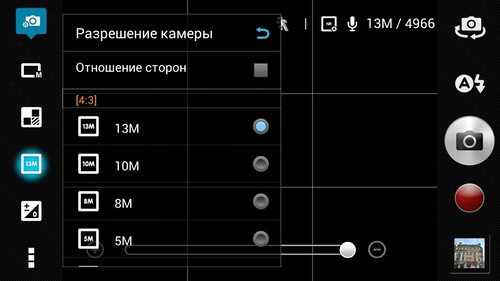
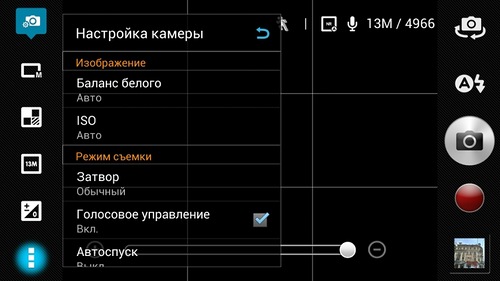
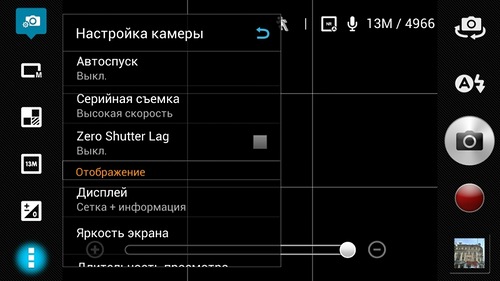
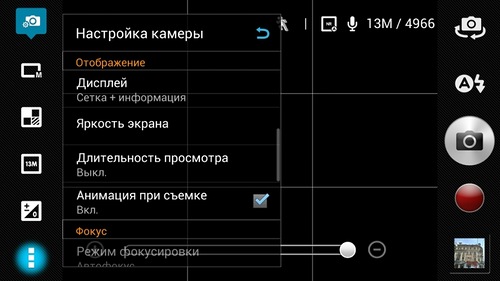
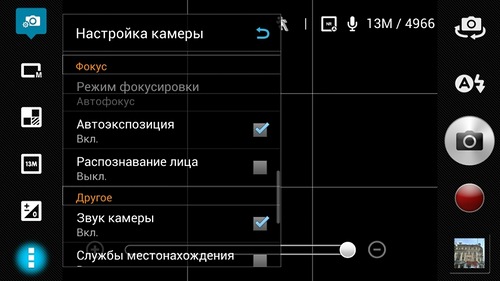
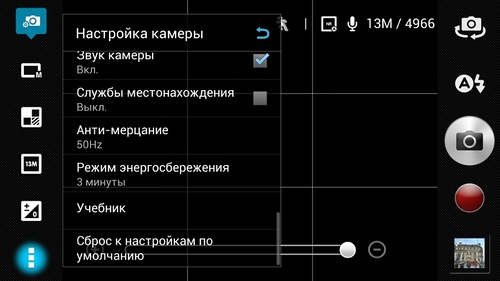










In general, the images are quite clear, thanks to a large sensor and 5-element optics.
View GIF Animation



View test videos
Dock station
In Russia, the smartphone will be sold with a docking station. Actually, its presence is the main feature of Padfone Infinity.

Externally, it is a regular tablet, but it does not have any hardware stuffing. Inside there is a battery, a camera for video calls, additional antennas (3G, LTE, Wi-Fi, BT) and control buttons. Without the smartphone itself, the tablet does not work.
The docking station does not look much different from the previous version of Padfone - the design is borrowed. The back of the device has a rubberized surface, keep it comfortable, does not slip. The surface is well protected from fingerprints.

On the upper left side is a key lock, just below - the volume rocker, next to it - a microphone.

On the right side there is a micro USB, which, like a smartphone, supports USB-OTG and MyDP.

The location of the speaker is good, because it does not overlap hands. The sound quality from the docking station is not bad, but the volume is not felt - the feeling that the sound goes into the tablet case.

The phone is inserted into the docking station quite simply - no effort is required.


The smartphone slides along the guides and is firmly fixed in four rubber linings.


When successfully docked, the smartphone vibrates and turns on the tablet screen. The phone keeps quite tightly - even if you turn the tablet over and shake it, nothing happens.




Having inserted the smartphone into the docking station, the screen turns on, and we have a desktop in front of us. You can individually configure the tables of the phone and tablet.

Most system applications successfully transfer the transition to the tablet view and back. For example, if contacts are running, then when we insert the smartphone into the docking station, contacts also open on the tablet screen. But this is not possible with all applications: for example, Gmail needs to be re-opened. The same situation with the games - most do not know how to switch on the go, they need to restart.
View screenshots of switching settings
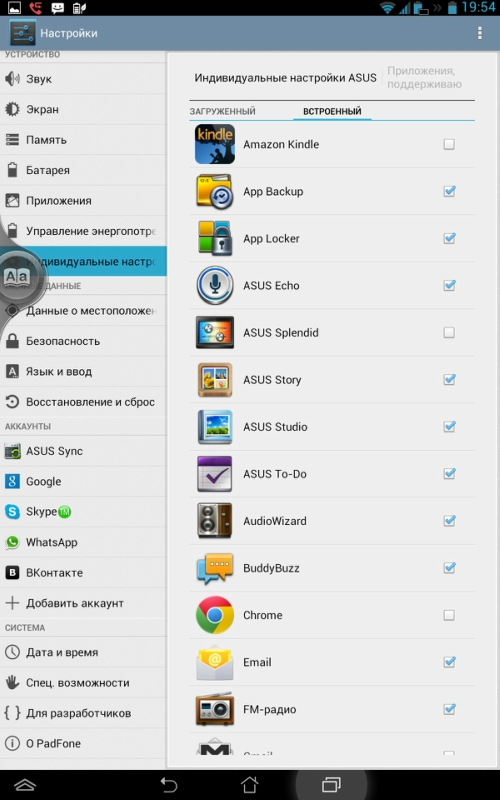
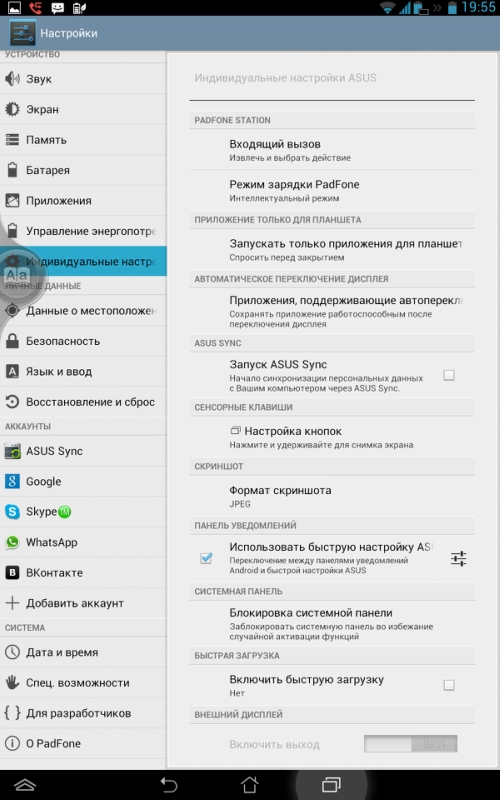
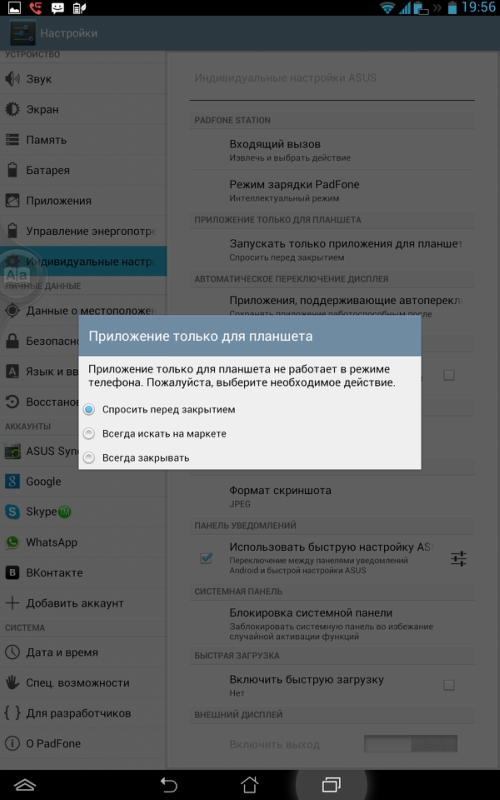

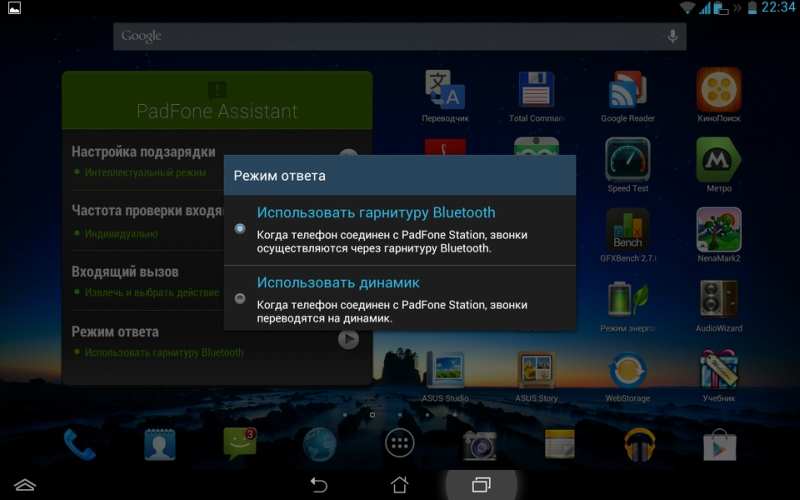

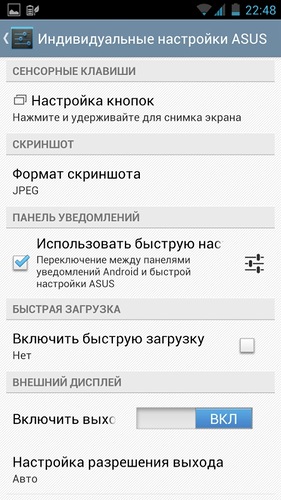








The screen of the docking station has a resolution of 1920x1200 pixels, using the Super IPS + matrix from Panasonic. The number of pixels per inch (PPI) is 224.

Viewing angles are high, but with strong deviations you can notice a change in colors. The maximum brightness in the "Outside" mode is 400 nits. The screen is protected from scratches and has an oleophobic coating, fingerprints are easily removed.

Here, too, there is an anti-glare filter, but the screen of the phone copes better with glare. In general, in terms of colors and picture quality, the screen of the tablet loses slightly to the phone.
Battery
Capacity of the built-in lithium-polymer battery 2400 mAh, non-removable battery. ASUS has built in several software modes of the smartphone, allowing you to save battery power by disabling push messages in a couple of clicks.



Thus, the smartphone can work from the battery about two days. If you turn off the economy mode, the smartphone with active use will last until the evening. Playing a high-performance game, the smartphone battery can be discharged in three hours. Quite well, considering that there is a Full HD screen.
The docking station has its own lithium-polymer battery with a capacity of 5000 mAh. The tablet cannot be powered by the smartphone battery, that is, if the battery in the docking station is low, the tablet screen will not work. ASUS offers three power modes for the docking station:
- “Intellectual mode” - at first the smartphone is discharged to 75%, then its charging starts and the process repeats;
- "Preferred phone mode" - the mode in which the smartphone is constantly charging;
- “Charging mode” - the docking station becomes a sort of PowerBank for the phone, the tablet screen is not used.

Full charging of the smartphone takes 2.5 hours, charging the docking station - almost 4 hours. The tablet can be charged from micro USB without a smartphone.

Performance
The hardware platform of the smartphone works on the top-end solution from Qualcomm, the Snapdragon 600 chip is used. Inside, the four Krait 300 cores work at 1.7 GHz in conjunction with the Adreno 320 graphics.

RAM - 2 GB, uses energy-efficient and fast memory LP-DDR3 . There is LTE support with our operators.
View benchmark results
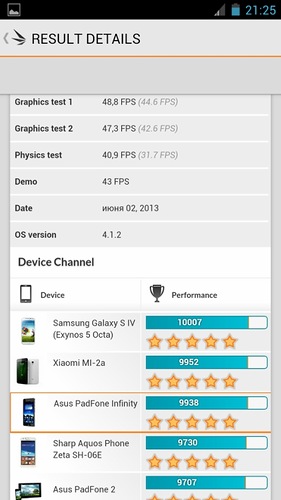

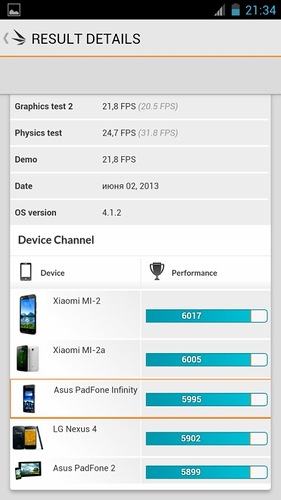

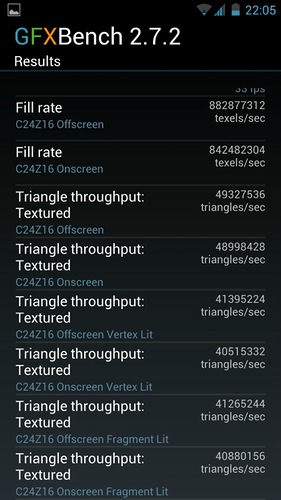
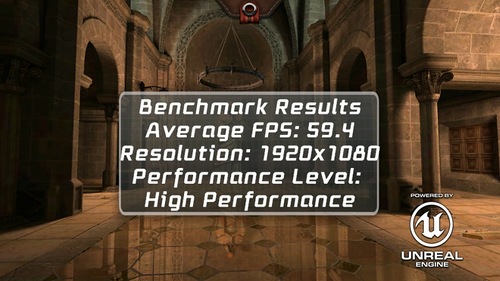
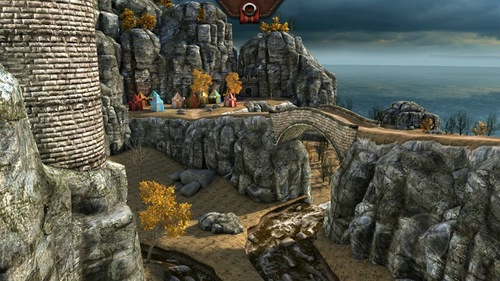
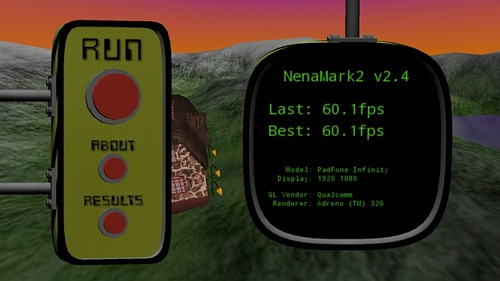
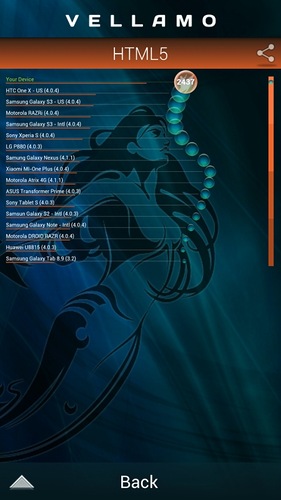

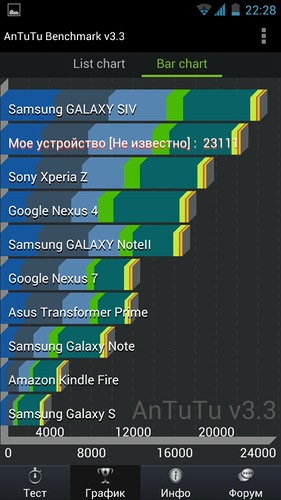
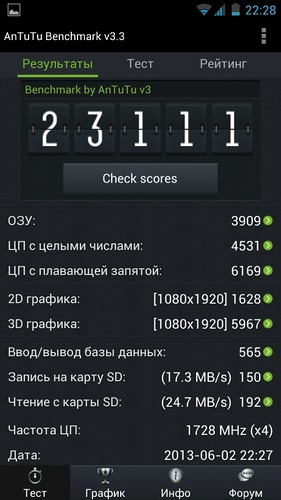













At the moment, the smartphone works on Android 4.1.2. The software is similar to the other tablets on Android from ASUS, various programs are installed that allow you to start working with a smartphone right out of the box.
View interface screenshots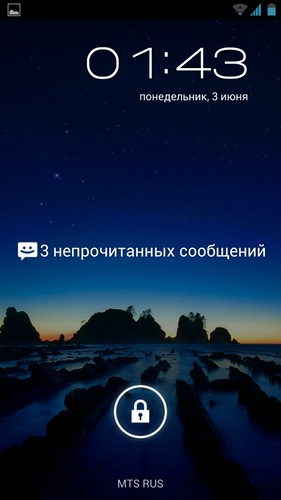

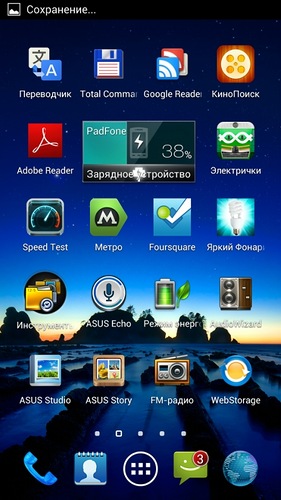

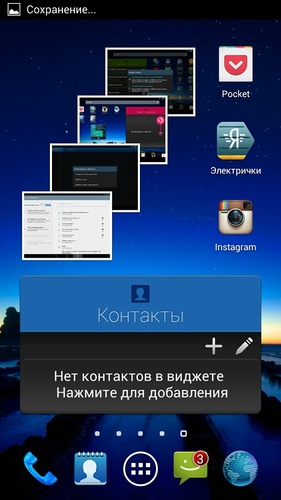

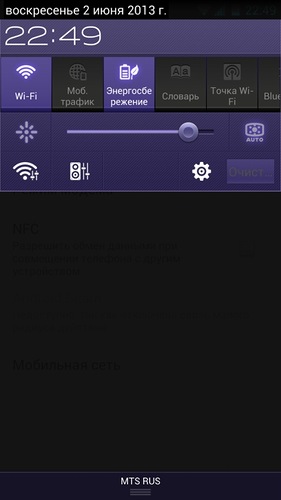

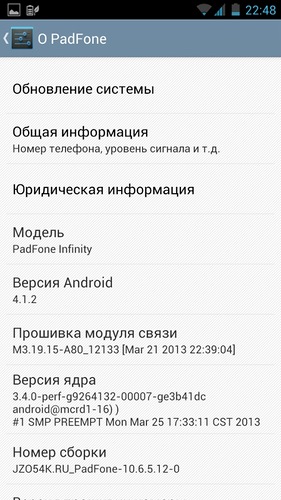
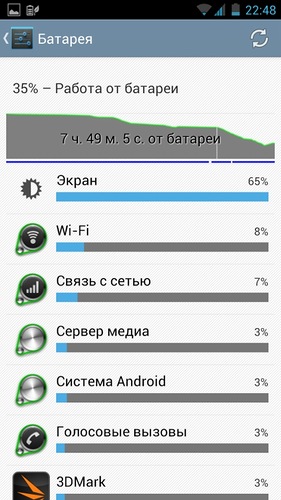
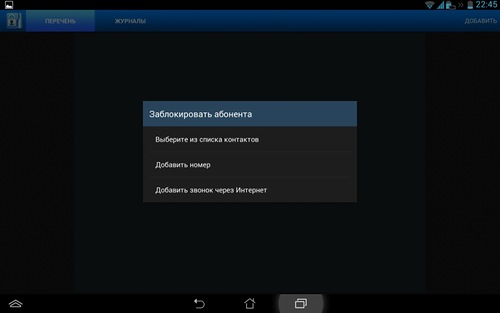

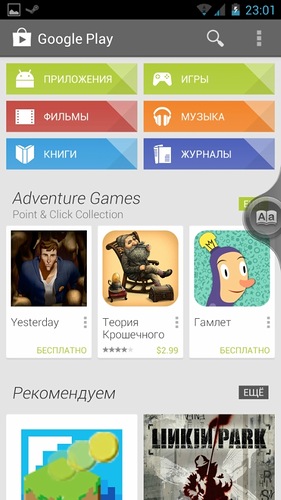


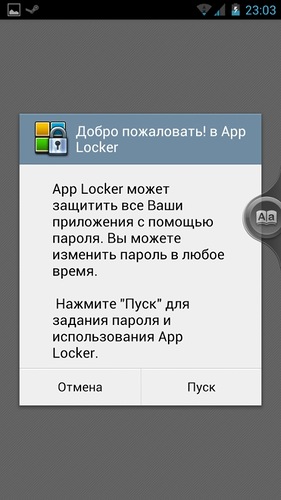


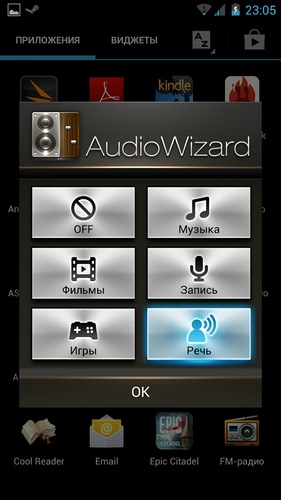



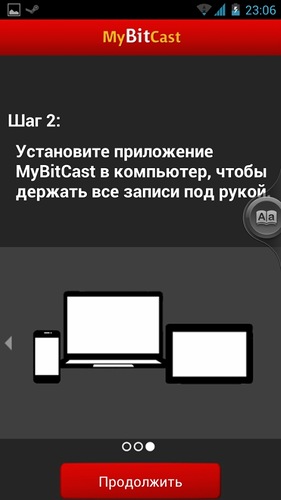


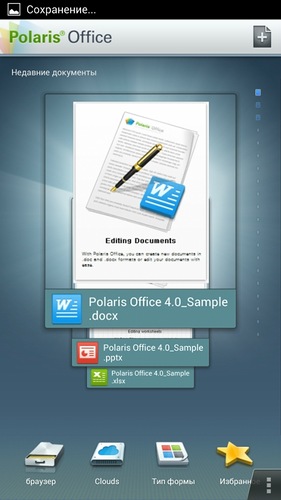


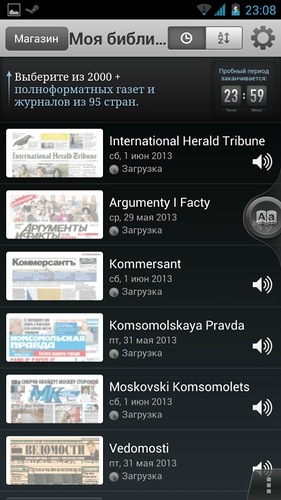
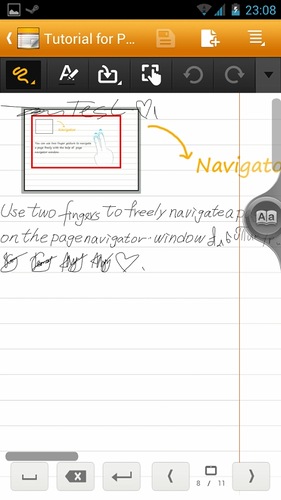


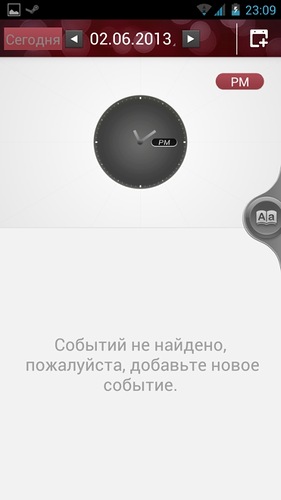
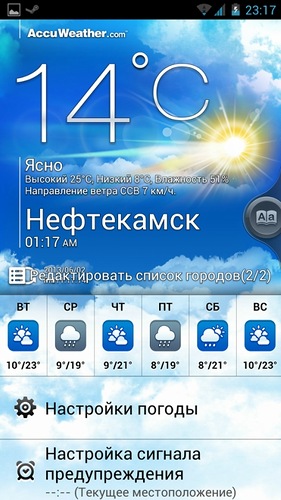
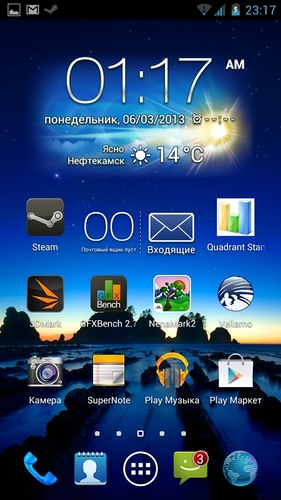
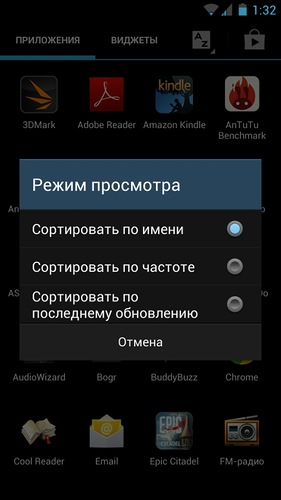




































The dictionary turned out the most interesting application. Almost in all programs, the movable dictionary button is visible on the side, and when pressed, the text selection mode is activated. You can translate any word in a third-party application, whether it is a browser, mail or book.




Conclusion
The third edition of Padfone came out on time. The hardware of the smartphone works on an equal footing with the flagships of 2013. You also get a powerful tablet with a Full HD screen, which is also a high level among competitors. Padfone Infinity is the only device that has no analogues, it will definitely find its buyer.
In Russia, the sale will go complete with a docking station, the volume is 64 GB, only one color variant is titanium gray. Price - 34 990 rubles.
Source: https://habr.com/ru/post/182708/
All Articles

